 Search by Keyword
|
“PLEASE PLEASE ME”
(Paul McCartney – John Lennon)
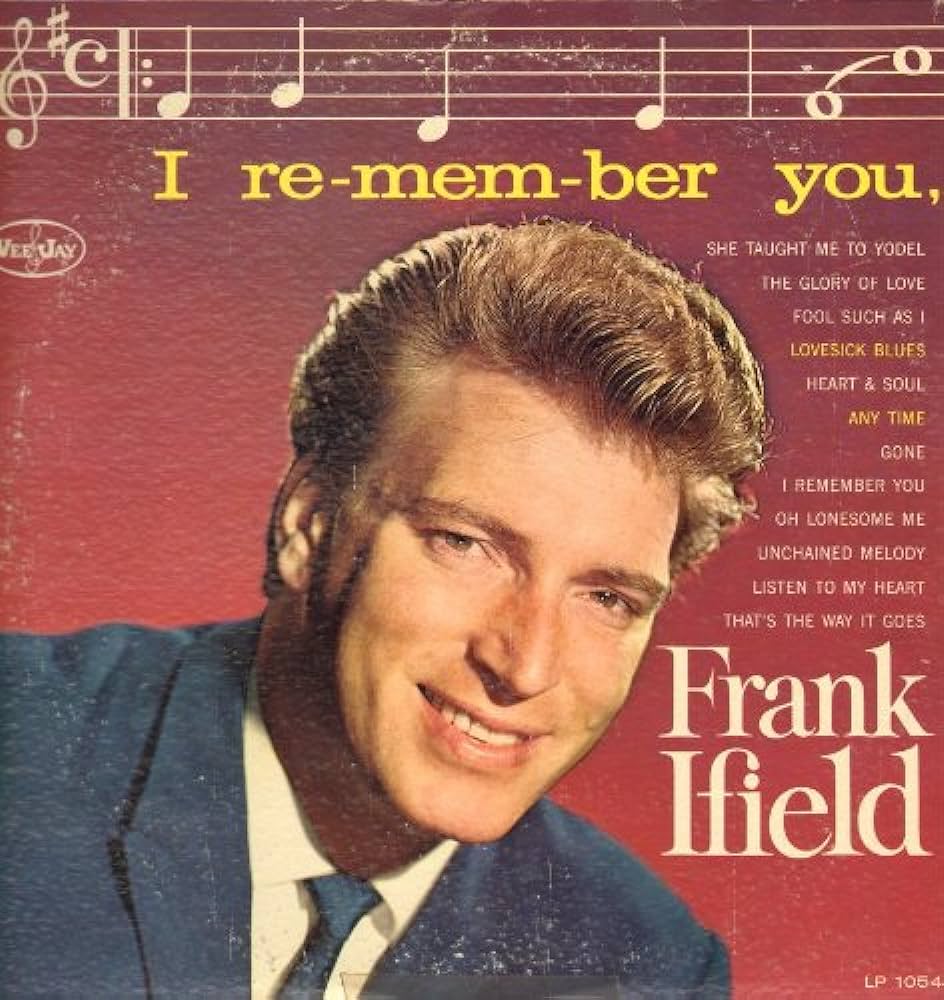 By the end of 1962, The Beatles were feeling a bit frustrated and disillusioned. The band had worked extremely hard during the previous three years in order to achieve national stardom but were unable to penetrate further than Liverpool and Hamburg. The Beatles began to feel “stale and cramped,” as Lennon had stated, and just wanted to “get out of Liverpool and break new ground.” Appearances at the Cavern Club in Liverpool had become "old hat" to them; the group had built up a tremendous following there, but it had failed to grow outside of their home town. The band was given brief opportunities in other local areas, such as Peterborough opening up for Frank Ifield, but other than their five residencies in Hamburg, Germany, they always bombed when they were away from home. By the end of 1962, The Beatles were feeling a bit frustrated and disillusioned. The band had worked extremely hard during the previous three years in order to achieve national stardom but were unable to penetrate further than Liverpool and Hamburg. The Beatles began to feel “stale and cramped,” as Lennon had stated, and just wanted to “get out of Liverpool and break new ground.” Appearances at the Cavern Club in Liverpool had become "old hat" to them; the group had built up a tremendous following there, but it had failed to grow outside of their home town. The band was given brief opportunities in other local areas, such as Peterborough opening up for Frank Ifield, but other than their five residencies in Hamburg, Germany, they always bombed when they were away from home.
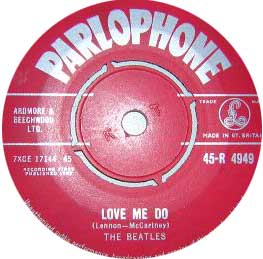 John Lennon also thought that they had “outlived the Hamburg stage,” where the group reluctantly returned in November / December, 1962 because of contractual obligations. Even though they were fortunate enough to secure an actual professional recording contract with Parlophone earlier in the year, their debut single “Love Me Do” reached to only #17 on the national UK pop chart, this being reached only because of local Liverpool sales as well as, rumor has it, their manager Brian Epstein personally purchasing 10,000 copies for his NEMS record store (or fudging the sales numbers). So, it seemed at the time, The Beatles were not to go any further than Liverpool. John Lennon also thought that they had “outlived the Hamburg stage,” where the group reluctantly returned in November / December, 1962 because of contractual obligations. Even though they were fortunate enough to secure an actual professional recording contract with Parlophone earlier in the year, their debut single “Love Me Do” reached to only #17 on the national UK pop chart, this being reached only because of local Liverpool sales as well as, rumor has it, their manager Brian Epstein personally purchasing 10,000 copies for his NEMS record store (or fudging the sales numbers). So, it seemed at the time, The Beatles were not to go any further than Liverpool.
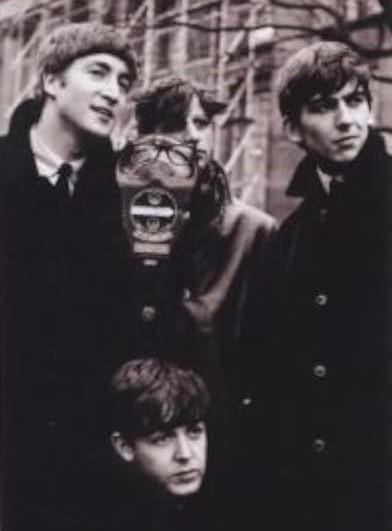 This is when a series of fortunate events, not to mention a brilliantly written song, changed their fate as well as history itself. Little did the band know that the song that they recorded on November 26th, 1962, which was then earmarked for their second single, would be the one that would begin the chain of events for taking The Beatles beyond their home town and, eventually, throughout the rest of the world. The song they recorded that day was “Please Please Me,” which finally opened the doors that they had been knocking on for over three years. This is when a series of fortunate events, not to mention a brilliantly written song, changed their fate as well as history itself. Little did the band know that the song that they recorded on November 26th, 1962, which was then earmarked for their second single, would be the one that would begin the chain of events for taking The Beatles beyond their home town and, eventually, throughout the rest of the world. The song they recorded that day was “Please Please Me,” which finally opened the doors that they had been knocking on for over three years.
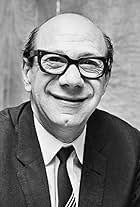 The first fortunate occurrence happened when Brian Epstein, as encouraged by producer George Martin, got in touch with music publisher Dick James in order to secure a publishing deal for new Lennon/McCartney compositions. Brian Epstein was unpleased by the lack of effort “Beechwood Music” had put forth to promote “Love Me Do.” In order to secure this publishing deal, Dick James played “Please Please Me” over the phone to Philip Jones, producer of the national TV show “Thank Your Lucky Stars.” Since Philip Jones agreed to book The Beatles on one of his upcoming shows, it clinched the deal for Dick James to be the group's new music publisher. The first fortunate occurrence happened when Brian Epstein, as encouraged by producer George Martin, got in touch with music publisher Dick James in order to secure a publishing deal for new Lennon/McCartney compositions. Brian Epstein was unpleased by the lack of effort “Beechwood Music” had put forth to promote “Love Me Do.” In order to secure this publishing deal, Dick James played “Please Please Me” over the phone to Philip Jones, producer of the national TV show “Thank Your Lucky Stars.” Since Philip Jones agreed to book The Beatles on one of his upcoming shows, it clinched the deal for Dick James to be the group's new music publisher.
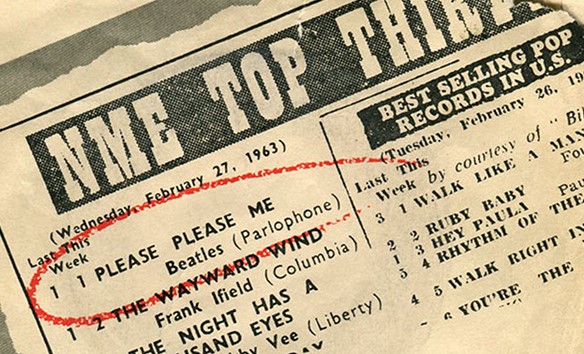 The new single was released in the UK on January 11th, 1963. Because Britain was seeing one of the worst winters in their history, most people were snowed-in at home on January 19th, 1963 to observe The Beatles performing “Please Please Me” on the British TV show "Thank Your Lucky Stars." National exposure of this exciting song, as well as the unusual appearance and hair style of the group, garnered them a lot of attention and propelled the record up the national British charts. And, because of the song's early success, promoter Arthur Howes booked the band on consecutive national tours. All of this gave The Beatles much press coverage and, combining all of these ingredients, propelled their second single to #1 on most of the British charts. And, as they say, the rest is history! The new single was released in the UK on January 11th, 1963. Because Britain was seeing one of the worst winters in their history, most people were snowed-in at home on January 19th, 1963 to observe The Beatles performing “Please Please Me” on the British TV show "Thank Your Lucky Stars." National exposure of this exciting song, as well as the unusual appearance and hair style of the group, garnered them a lot of attention and propelled the record up the national British charts. And, because of the song's early success, promoter Arthur Howes booked the band on consecutive national tours. All of this gave The Beatles much press coverage and, combining all of these ingredients, propelled their second single to #1 on most of the British charts. And, as they say, the rest is history!
Songwriting History
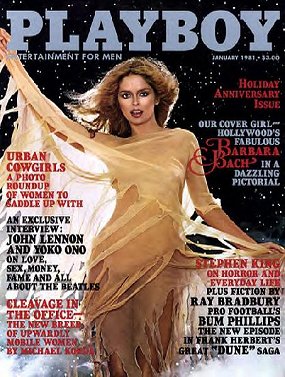 It has been agreed by both Lennon and McCartney that “Please Please Me” was entirely written by Lennon. As recounted in his 1980 Playboy interview, John states: “That’s me completely…I remember the day I wrote it. I remember the pink eiderdown over the bed sitting in one of the bedrooms in my house on Menlove Avenue, my auntie’s place." The actual date of the writing can be pinpointed to June 7th through 9th, 1962, just after The Beatles returned from their first recording session at EMI Studios in London. Producer George Martin didn't think the three original compositions they recorded on that day (June 6th, 1962) were good enough to be used as their first single so, spurred on to impress him, John immediately set out to write something that was commercial enough; the perfect pop song! It has been agreed by both Lennon and McCartney that “Please Please Me” was entirely written by Lennon. As recounted in his 1980 Playboy interview, John states: “That’s me completely…I remember the day I wrote it. I remember the pink eiderdown over the bed sitting in one of the bedrooms in my house on Menlove Avenue, my auntie’s place." The actual date of the writing can be pinpointed to June 7th through 9th, 1962, just after The Beatles returned from their first recording session at EMI Studios in London. Producer George Martin didn't think the three original compositions they recorded on that day (June 6th, 1962) were good enough to be used as their first single so, spurred on to impress him, John immediately set out to write something that was commercial enough; the perfect pop song!
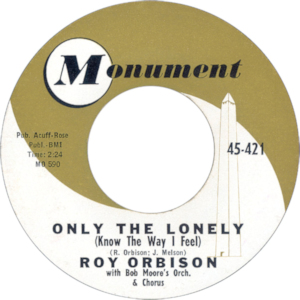 Lennon added: “It was my attempt at writing a Roy Orbison song, would you believe it? I had heard Roy Orbison doing ‘Only The Lonely’ on the radio.” John set out to write a ballad in Roy Orbison's dramatically drawn-out format while incorporating the double use of the word “please.” This is the rendition of the song they debuted in EMI Studio Two on September 4th, 1962 for consideration to be The Beatles' first single. This song was to change shape, due to the suggestions of George Martin a week later. Lennon added: “It was my attempt at writing a Roy Orbison song, would you believe it? I had heard Roy Orbison doing ‘Only The Lonely’ on the radio.” John set out to write a ballad in Roy Orbison's dramatically drawn-out format while incorporating the double use of the word “please.” This is the rendition of the song they debuted in EMI Studio Two on September 4th, 1962 for consideration to be The Beatles' first single. This song was to change shape, due to the suggestions of George Martin a week later.
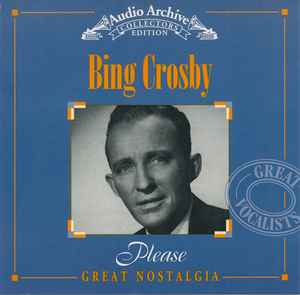 John then added: “Also, I was always intrigued by the words to a Bing Crosby song that went: ‘Please lend a little ear to my pleas.....’ I was always intrigued by the double use of the word ‘please.’ So my song was a combination of Roy Orbison and Bing Crosby.” The song that John was referring to was a 1932 hit simply entitled “Please,” which spent six weeks at #1 on the American Billboard "Top 60 Pop Songs" chart that year. "'Please Please Me' was a John idea," McCartney explained in his book "The Lyrics." "John liked the double meaning of 'please.' Yeah, 'please,' y'know, pretty please. 'Please have intercourse with me. So, pretty please, have intercourse with me, I beg you to have intercourse with me.' He liked that, and I liked that he liked that. This was the kind of thing we would see in each other, the kind of thing in which we were matched up. We were in sync." John then added: “Also, I was always intrigued by the words to a Bing Crosby song that went: ‘Please lend a little ear to my pleas.....’ I was always intrigued by the double use of the word ‘please.’ So my song was a combination of Roy Orbison and Bing Crosby.” The song that John was referring to was a 1932 hit simply entitled “Please,” which spent six weeks at #1 on the American Billboard "Top 60 Pop Songs" chart that year. "'Please Please Me' was a John idea," McCartney explained in his book "The Lyrics." "John liked the double meaning of 'please.' Yeah, 'please,' y'know, pretty please. 'Please have intercourse with me. So, pretty please, have intercourse with me, I beg you to have intercourse with me.' He liked that, and I liked that he liked that. This was the kind of thing we would see in each other, the kind of thing in which we were matched up. We were in sync."
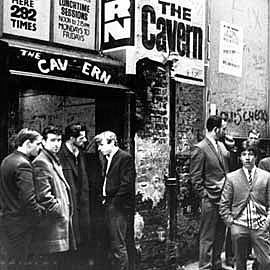 The following day after the song was written by Lennon, June 9th, 1962, they performed a "Beatles Welcome Home Show" at the Cavern Club in Liverpool. After the show, John and Paul, accompanied by young female fans Lindy Ness and Lou Stern, were driven over to Paul's house on Forthlin Road. Lindy Ness innocently wrote in her diary: "We spent the night there." This evening is of significance because, as detailed in Mark Lewisohn's 2013 book "Tune In," the song "Please Please Me" was still taking shape. The following day after the song was written by Lennon, June 9th, 1962, they performed a "Beatles Welcome Home Show" at the Cavern Club in Liverpool. After the show, John and Paul, accompanied by young female fans Lindy Ness and Lou Stern, were driven over to Paul's house on Forthlin Road. Lindy Ness innocently wrote in her diary: "We spent the night there." This evening is of significance because, as detailed in Mark Lewisohn's 2013 book "Tune In," the song "Please Please Me" was still taking shape.
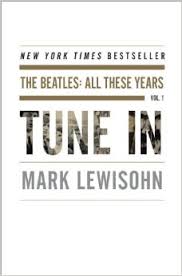 Mark Lewisohn writes: "Late night on June 9, Lindy (Ness) and Lou (Stern) watched them refine ("Please Please Me"), seated side by side at Jim Mac's upright piano in Paul's front parlor. Lindy (Ness) recalled them 'mostly working on the chord changes, with a lot of joking and messing about.' The two 15-year-old girls stayed throughout the night and, later, dozed under the piano while Lennon - McCartney explored chords above their heads. 'They asked us what we thought of it,' Lou (Stern) remembers, 'and we said it was great. It was certainly great to see them writing, and that they didn't mind us being there - but they were always dead casual about things like that.'" Mark Lewisohn writes: "Late night on June 9, Lindy (Ness) and Lou (Stern) watched them refine ("Please Please Me"), seated side by side at Jim Mac's upright piano in Paul's front parlor. Lindy (Ness) recalled them 'mostly working on the chord changes, with a lot of joking and messing about.' The two 15-year-old girls stayed throughout the night and, later, dozed under the piano while Lennon - McCartney explored chords above their heads. 'They asked us what we thought of it,' Lou (Stern) remembers, 'and we said it was great. It was certainly great to see them writing, and that they didn't mind us being there - but they were always dead casual about things like that.'"
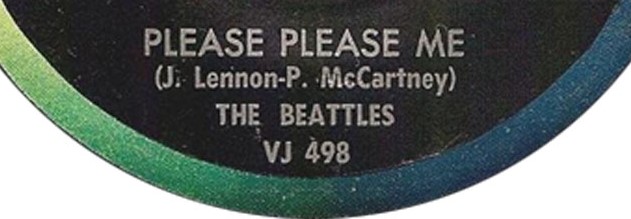 This is not to say that Paul should be viewed as a collaborator on the song. Lennon made this clear in a postcard he sent to Melody Maker magazine back in 1971, saying: "I wrote 'Please Please Me' alone. It was recorded in the exact sequence in which I wrote it." As detailed above, Paul never claimed any co-authorship for this song, referring to it always as "John's." Interestingly, upon release, most record labels around the world listed this John Lennon song as a "McCartney / Lennon" composition, the US Vee-Jay single being one noteable exception by more accurately listing this as a "J. Lennon - P. McCartney" song. This is not to say that Paul should be viewed as a collaborator on the song. Lennon made this clear in a postcard he sent to Melody Maker magazine back in 1971, saying: "I wrote 'Please Please Me' alone. It was recorded in the exact sequence in which I wrote it." As detailed above, Paul never claimed any co-authorship for this song, referring to it always as "John's." Interestingly, upon release, most record labels around the world listed this John Lennon song as a "McCartney / Lennon" composition, the US Vee-Jay single being one noteable exception by more accurately listing this as a "J. Lennon - P. McCartney" song.
Recording History
 On September 4th, 1962, the band gathered in EMI Studio Two for their second EMI session, trying to nail down what would be the songs on each side of their first single for the Parlophone label. Before these sessions began, George Martin and producer Ron Richards heard them going through a vigorous rehearsal session to determine which songs would be featured on their first record. George Martin had already determined that "How Do You Do It," a Mitch Murray-penned composition he had hand picked for The Beatles to record, would be the a-side of their first single. The objective now was to pick which of their original songs would become the b-side. The Beatles rehearsed six songs within these three hours, 2:30 to 5:30 pm, which included the newly written “Please Please Me.” On September 4th, 1962, the band gathered in EMI Studio Two for their second EMI session, trying to nail down what would be the songs on each side of their first single for the Parlophone label. Before these sessions began, George Martin and producer Ron Richards heard them going through a vigorous rehearsal session to determine which songs would be featured on their first record. George Martin had already determined that "How Do You Do It," a Mitch Murray-penned composition he had hand picked for The Beatles to record, would be the a-side of their first single. The objective now was to pick which of their original songs would become the b-side. The Beatles rehearsed six songs within these three hours, 2:30 to 5:30 pm, which included the newly written “Please Please Me.”
 As this was the slow and bluesy Roy Orbison version of Lennon's new song, George Martin offered some suggestions. "They played me 'Please Please Me' but it was very slow and rather dreary," related George Martin in Mark Lewisohn's book "Tune In," adding, "I told them if they doubled the speed it might be interesting. I told them what beginning and ending to put on it." Paul recalled: "We were a bit embarrassed that he had found a better tempo than we had." Their producer's suggestions were taken to heart and were to be implemented into the song at another time, thereby disqualifying "Please Please Me" as becoming their single's b-side at this point. Of course, since this was a rehearsal session only, no tapes were rolling so there is no audio evidence of this bluesy version of the song as John originally envisioned it. As this was the slow and bluesy Roy Orbison version of Lennon's new song, George Martin offered some suggestions. "They played me 'Please Please Me' but it was very slow and rather dreary," related George Martin in Mark Lewisohn's book "Tune In," adding, "I told them if they doubled the speed it might be interesting. I told them what beginning and ending to put on it." Paul recalled: "We were a bit embarrassed that he had found a better tempo than we had." Their producer's suggestions were taken to heart and were to be implemented into the song at another time, thereby disqualifying "Please Please Me" as becoming their single's b-side at this point. Of course, since this was a rehearsal session only, no tapes were rolling so there is no audio evidence of this bluesy version of the song as John originally envisioned it.
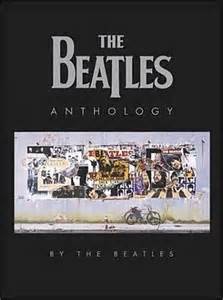 However, both engineers Norman Smith and Geoff Emerick were present at that session to witness this early version of "Please Please Me" being rehearsed. In his book "Here, There And Everywhere," Geoff Emerick explained: "The song being rehearsed was soulful and was sung with great feeling by John, but it had a very slow tempo and was marred by a clumsy phrase that George Harrison performed over and over again, this being repetitive to the point of annoyance. Ringo was doing something odd too - he was sitting behind his drum kit with a maraca in one hand and a tambourine in the other, all the while hitting the bass drum pedal with his right foot, a ridiculous posture that caused Norman (Smith) to burst into laughter and shout out to us, 'Look at what that bloody drummer is up to now!" In the "Beatles Anthology" book, Ringo concurs, stating: "On my first visit in September we just ran through some tracks for George Martin. We even did 'Please Please Me.' I remember that because while we were (doing) it I was playing the bass drum with a maraca in one hand and a tambourine in the other." George Martin of course witnessed this display too, which most probably cemented his earlier idea of using a studio drummer for The Beatles. However, both engineers Norman Smith and Geoff Emerick were present at that session to witness this early version of "Please Please Me" being rehearsed. In his book "Here, There And Everywhere," Geoff Emerick explained: "The song being rehearsed was soulful and was sung with great feeling by John, but it had a very slow tempo and was marred by a clumsy phrase that George Harrison performed over and over again, this being repetitive to the point of annoyance. Ringo was doing something odd too - he was sitting behind his drum kit with a maraca in one hand and a tambourine in the other, all the while hitting the bass drum pedal with his right foot, a ridiculous posture that caused Norman (Smith) to burst into laughter and shout out to us, 'Look at what that bloody drummer is up to now!" In the "Beatles Anthology" book, Ringo concurs, stating: "On my first visit in September we just ran through some tracks for George Martin. We even did 'Please Please Me.' I remember that because while we were (doing) it I was playing the bass drum with a maraca in one hand and a tambourine in the other." George Martin of course witnessed this display too, which most probably cemented his earlier idea of using a studio drummer for The Beatles.
As it turned out, "Love Me Do" was chosen by George Martin as the b-side for the single at this point, the group proceeding to record it later that day. The other rehearsed songs, including "Please Please Me," were held back for potential use at a later time.
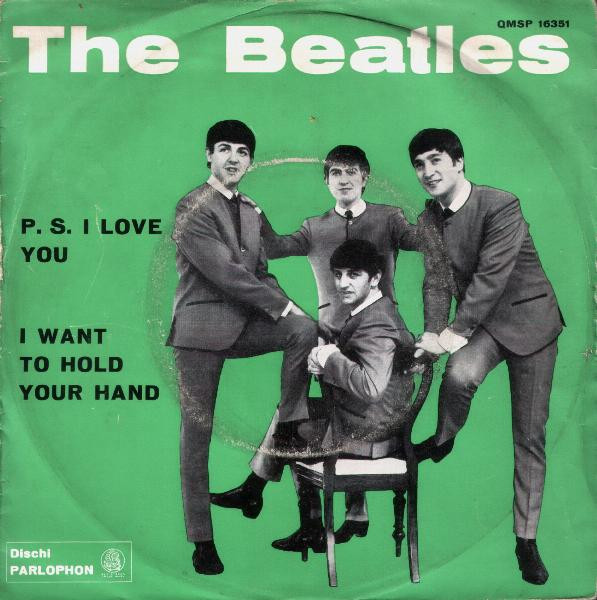 One week after this, on September 11th, 1962, The Beatles reconvened at EMI Studio Two at 4:45 pm to continue sessions for their first single. Because of disputes with publishing companies, the composition "How Do You Do It" was no longer going to be a part of the first Beatles single at all. George Martin reluctantly agreed that "Love Me Do" would be the a-side of the 45, the objective of this session being to record songs for consideration for the b-side. While Ron Richards was in the producer's chair, a decision was made to hire a session musician to act as drummer on this day, the choice being Andy White. The first song recorded was "P.S. I Love You," this being recorded relatively quickly, leaving a good portion of studio time still available. One week after this, on September 11th, 1962, The Beatles reconvened at EMI Studio Two at 4:45 pm to continue sessions for their first single. Because of disputes with publishing companies, the composition "How Do You Do It" was no longer going to be a part of the first Beatles single at all. George Martin reluctantly agreed that "Love Me Do" would be the a-side of the 45, the objective of this session being to record songs for consideration for the b-side. While Ron Richards was in the producer's chair, a decision was made to hire a session musician to act as drummer on this day, the choice being Andy White. The first song recorded was "P.S. I Love You," this being recorded relatively quickly, leaving a good portion of studio time still available.
 Geoff Emerick remembered: “There was still another hour of time available to The Beatles. 'Have you boys got anything else you would like to perform for me?' (Ron) Richards asked over the intercom. 'Yes!' came the band's enthusiastic reply. Just then, George Martin walked in…and got on the talkback to say hello to the band...He then announced that he was going to have a quick listen to what they had done, and would then be right down to start work on the newest song. Norman (Smith) lifted a few faders and we were able to hear what was going on downstairs." The band had taken time in the past week to incorporate the changes that George Martin suggested for "Please Please Me," including increasing the tempo. However, Ron Richards made another suggestion on this day, something that the group had been playing the previous time they brought the song into the studio. "George (Harrison) was playing the opening phrase over and over and over throughout the song. I said, 'For Christ's sake, George, just play it in the gaps!'" Geoff Emerick remembered: “There was still another hour of time available to The Beatles. 'Have you boys got anything else you would like to perform for me?' (Ron) Richards asked over the intercom. 'Yes!' came the band's enthusiastic reply. Just then, George Martin walked in…and got on the talkback to say hello to the band...He then announced that he was going to have a quick listen to what they had done, and would then be right down to start work on the newest song. Norman (Smith) lifted a few faders and we were able to hear what was going on downstairs." The band had taken time in the past week to incorporate the changes that George Martin suggested for "Please Please Me," including increasing the tempo. However, Ron Richards made another suggestion on this day, something that the group had been playing the previous time they brought the song into the studio. "George (Harrison) was playing the opening phrase over and over and over throughout the song. I said, 'For Christ's sake, George, just play it in the gaps!'"
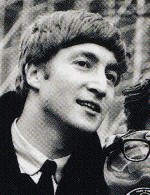 Geoff Emerick recalled: “After the first run-through, there was a great deal of discussion, and it was clear that George Martin was dissatisfied. ‘Look, you have definitely got something there, boys...we need to sort out...some harmony parts for Paul.’ They all nodded enthusiastically and began experimenting along the lines that George had suggested." In the March 8th, 1963 edition of "New Musical Express," Lennon informed the UK magazine: "What made it exciting was that we almost abandoned ("Please Please Me") as the b-side of 'Love Me Do.' Can you imagine that; a number that could get us to the top just tucked away! We changed our minds only because we were so tired the night we did 'Love Me Do.' We'd been going over it a few times and when we came to the question of the flip side of 'Love Me Do,' we intended using 'Please Please Me.' Our recording manager George Martin thought our arrangement was fussy, so we tried to make it simpler. We were getting very tired, though, and we just couldn't seem to get it right. We're conscientious about our work and we don't like to rush things." Geoff Emerick recalled: “After the first run-through, there was a great deal of discussion, and it was clear that George Martin was dissatisfied. ‘Look, you have definitely got something there, boys...we need to sort out...some harmony parts for Paul.’ They all nodded enthusiastically and began experimenting along the lines that George had suggested." In the March 8th, 1963 edition of "New Musical Express," Lennon informed the UK magazine: "What made it exciting was that we almost abandoned ("Please Please Me") as the b-side of 'Love Me Do.' Can you imagine that; a number that could get us to the top just tucked away! We changed our minds only because we were so tired the night we did 'Love Me Do.' We'd been going over it a few times and when we came to the question of the flip side of 'Love Me Do,' we intended using 'Please Please Me.' Our recording manager George Martin thought our arrangement was fussy, so we tried to make it simpler. We were getting very tired, though, and we just couldn't seem to get it right. We're conscientious about our work and we don't like to rush things."
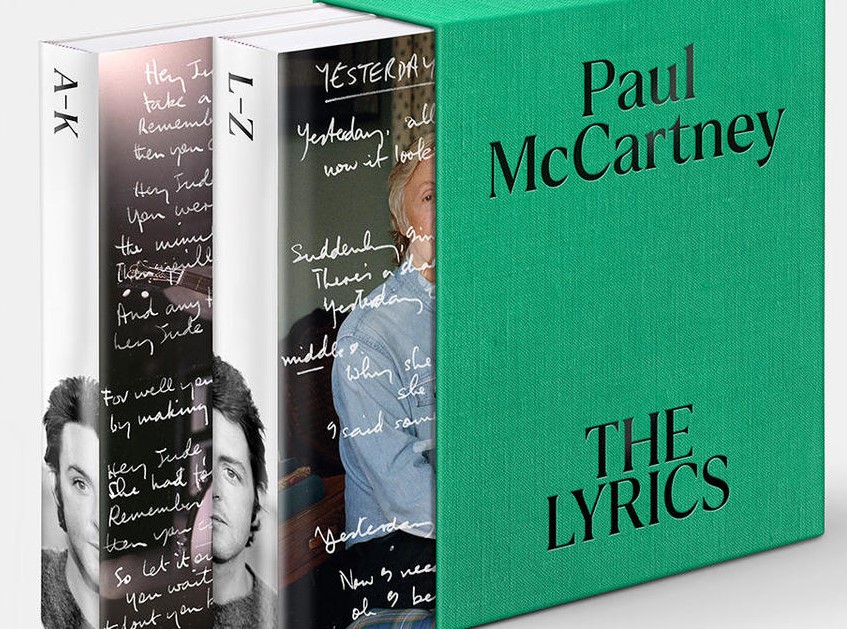 In his book "The Lyrics," Paul recalled: "George (Martin) liked the song when we brought it in, but he asked, 'Do you think we could do it faster?' We were like, 'No, no, no,' but, being very persuasive, George said, 'Let's just try it. If you don't like it, we don't have to.' He explained, 'I think this could be your first #1.' So grudgingly, we all lifted the tempo." Another element of this new rendition was John and Paul's use of harmonies during the verses ala "Cathy's Clown" by The Everly Brothers, which George Martin undoubtedly preferred over the harmony-less version the band played for him back on September 4th. "I did the trick of remaining on the high note while the melody cascaded down from it," explained McCartney in his 1997 book "Many Years From Now." In any event, one of these "tired" experimentations with "Please Please Me" were preserved on tape, an acetate disc of the recording made being evidence that this was indeed under consideration for the b-side of "Love Me Do." This version of "Please Please Me" was included on the 1994 compilation album "Anthology 1." In his book "The Lyrics," Paul recalled: "George (Martin) liked the song when we brought it in, but he asked, 'Do you think we could do it faster?' We were like, 'No, no, no,' but, being very persuasive, George said, 'Let's just try it. If you don't like it, we don't have to.' He explained, 'I think this could be your first #1.' So grudgingly, we all lifted the tempo." Another element of this new rendition was John and Paul's use of harmonies during the verses ala "Cathy's Clown" by The Everly Brothers, which George Martin undoubtedly preferred over the harmony-less version the band played for him back on September 4th. "I did the trick of remaining on the high note while the melody cascaded down from it," explained McCartney in his 1997 book "Many Years From Now." In any event, one of these "tired" experimentations with "Please Please Me" were preserved on tape, an acetate disc of the recording made being evidence that this was indeed under consideration for the b-side of "Love Me Do." This version of "Please Please Me" was included on the 1994 compilation album "Anthology 1."
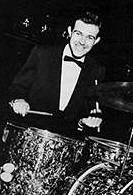 Interestingly, Geoff Emerick writes that drummer Andy White “was dismissed for the day” just before the band started work on “Please Please Me.” However, listening to the evidence on the “Anthology 1” album, it appears that the drumming style is quite unlike that of Ringo. This newly found recording shows the drummer playing perfect drum fills in the song's bridge, whereas Ringo’s staggered left-handed fills are prominently featured in the released version recorded on November 26th of that year. Mark Lewisohn's book "Tune In" also verifies that Andy White was indeed the drummer on this version of the song. In a 2012 BBC interview, Andy White himself stated: "From the drum sound I can tell I was on it, because it was a vastly different sound to Ringo's drumset at that time. This was before he got the Ludwig set. Each drummer gets an individual sound, first of all by the way they tune the drums and then by the way they play the drums." Interestingly, Geoff Emerick writes that drummer Andy White “was dismissed for the day” just before the band started work on “Please Please Me.” However, listening to the evidence on the “Anthology 1” album, it appears that the drumming style is quite unlike that of Ringo. This newly found recording shows the drummer playing perfect drum fills in the song's bridge, whereas Ringo’s staggered left-handed fills are prominently featured in the released version recorded on November 26th of that year. Mark Lewisohn's book "Tune In" also verifies that Andy White was indeed the drummer on this version of the song. In a 2012 BBC interview, Andy White himself stated: "From the drum sound I can tell I was on it, because it was a vastly different sound to Ringo's drumset at that time. This was before he got the Ludwig set. Each drummer gets an individual sound, first of all by the way they tune the drums and then by the way they play the drums."
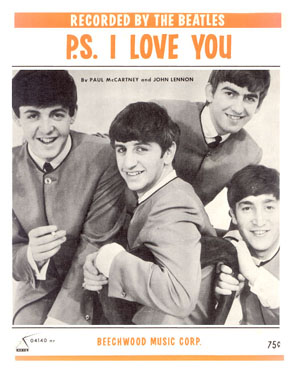 After this version of the song "Please Please Me" was recorded, they took advantage of the remaining time of the recording session to record another version of "Love Me Do" with Andy White on drums and Ringo on tambourine. With this accomplished, their session ended at 6:30 pm. Producer Ron Richrds explained: “We were standing in the corridor outside the control room after this session. George (Martin) was saying, 'We haven’t quite got ‘Please Please Me’ right, but it’s too good a song to just throw away. We’ll leave it for another time.'" Upon listening to the “Anthology 1” version, you can see how close they really were to the finished version. The few missing ingredients could easily have been added in overdubs, which was a luxury that they would utilize very soon afteerward. However, the decision was eventually made that the first version of "Love Me Do" (with Ringo on drums) would be the a-side and "P.S. I Love You" would be the b-side of their first single. After this version of the song "Please Please Me" was recorded, they took advantage of the remaining time of the recording session to record another version of "Love Me Do" with Andy White on drums and Ringo on tambourine. With this accomplished, their session ended at 6:30 pm. Producer Ron Richrds explained: “We were standing in the corridor outside the control room after this session. George (Martin) was saying, 'We haven’t quite got ‘Please Please Me’ right, but it’s too good a song to just throw away. We’ll leave it for another time.'" Upon listening to the “Anthology 1” version, you can see how close they really were to the finished version. The few missing ingredients could easily have been added in overdubs, which was a luxury that they would utilize very soon afteerward. However, the decision was eventually made that the first version of "Love Me Do" (with Ringo on drums) would be the a-side and "P.S. I Love You" would be the b-side of their first single.
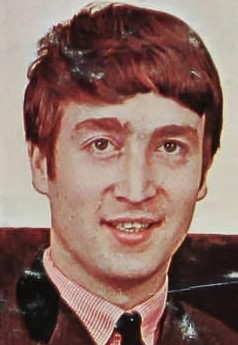 In the meantime, the group took to heart the suggestions made to rework "Please Please Me" one more time for a future recording session. In the above mentioned "New Musical Express" article, John related: "In the following weeks, we went over and over it again and again and we changed the tempo a little bit. And we altered the words slightly. And then we went over the idea of featuring the harmonica, just as we had done on 'Love Me Do.'" In his book "The Lyrics," McCartney adds: ""That was one of the great things about working in a collaboration. I could bring something in that John would spot needed alteration. John would bring something in that I would spot needed alteration. Then, if neither of us (could identify) the problem, George Martin would. That collaboration made The Beatles a very lucky little group to be in." In the meantime, the group took to heart the suggestions made to rework "Please Please Me" one more time for a future recording session. In the above mentioned "New Musical Express" article, John related: "In the following weeks, we went over and over it again and again and we changed the tempo a little bit. And we altered the words slightly. And then we went over the idea of featuring the harmonica, just as we had done on 'Love Me Do.'" In his book "The Lyrics," McCartney adds: ""That was one of the great things about working in a collaboration. I could bring something in that John would spot needed alteration. John would bring something in that I would spot needed alteration. Then, if neither of us (could identify) the problem, George Martin would. That collaboration made The Beatles a very lucky little group to be in."
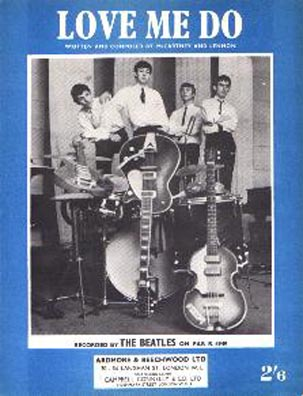 On November 16th, 1962, George Martin arranged for a meeting with the group for a proposed plan of action for a second single. Because "Love Me Do" had only peaked at #17 on the British charts, producer George Martin recognized that they had been obligated to be out of the country in Hamburg, Germany during parts of November and December as the record started to climb the charts in Britain, thereby not being around to promote their first single with live UK performances. Nevertheless, their record's modest appearances on the charts propelled him to take a chance on investing in a second single for this new artist, wanting to be able to acquire for himself a Cliff Richard equivalent for his Parlophone label. On November 16th, 1962, George Martin arranged for a meeting with the group for a proposed plan of action for a second single. Because "Love Me Do" had only peaked at #17 on the British charts, producer George Martin recognized that they had been obligated to be out of the country in Hamburg, Germany during parts of November and December as the record started to climb the charts in Britain, thereby not being around to promote their first single with live UK performances. Nevertheless, their record's modest appearances on the charts propelled him to take a chance on investing in a second single for this new artist, wanting to be able to acquire for himself a Cliff Richard equivalent for his Parlophone label.
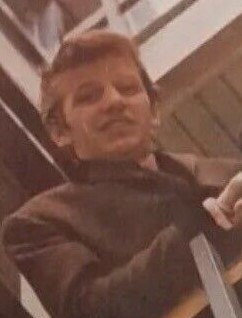 George Martin remembered that, during this meeting, he revealed to The Beatles that he "was still thinking that we should release their recording of 'How Do You Do It'" for the a-side of their second single, still feeling strongly that it had hit potential. In their book "Beatles Anthology," Ringo said: "I remember us all being ready to stand up for the principle of, 'We have written these songs and we want to do them!'" Music publisher Dick James, however, did not like the rendition of "How Do You Do It" that The Beatles recorded and had a vested interest in having someone else record the song, having just secured publishing rights for the complete future "Lennon / McCartney" catalog. "I would still have issued (The Beatles' recording of) 'How Do You Do It' had they not persuaded me to listen to another version of 'Please Please Me,'" recalled George Martin. George Martin remembered that, during this meeting, he revealed to The Beatles that he "was still thinking that we should release their recording of 'How Do You Do It'" for the a-side of their second single, still feeling strongly that it had hit potential. In their book "Beatles Anthology," Ringo said: "I remember us all being ready to stand up for the principle of, 'We have written these songs and we want to do them!'" Music publisher Dick James, however, did not like the rendition of "How Do You Do It" that The Beatles recorded and had a vested interest in having someone else record the song, having just secured publishing rights for the complete future "Lennon / McCartney" catalog. "I would still have issued (The Beatles' recording of) 'How Do You Do It' had they not persuaded me to listen to another version of 'Please Please Me,'" recalled George Martin.
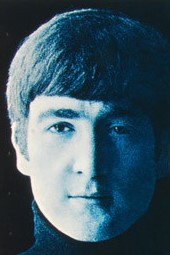 It was then decided that their original recording of “Please Please Me” from September 11th, 1962 was unsuitable to be The Beatles' second single, so the next recording session, scheduled for November 26th of that year, was arranged to remake the song, as well as to record the b-side. "We'd had a Top 30 entry with 'Love Me Do' and we really thought we were on top of the world," John related in 1963 as featured in the book "Beatles Anthology." "Then came 'Please Please Me' - and wham! We tried to make it as simple as possible. Some of the stuff we've written in the past has been a bit way-out, but we aimed this one straight at the hit parade." It was then decided that their original recording of “Please Please Me” from September 11th, 1962 was unsuitable to be The Beatles' second single, so the next recording session, scheduled for November 26th of that year, was arranged to remake the song, as well as to record the b-side. "We'd had a Top 30 entry with 'Love Me Do' and we really thought we were on top of the world," John related in 1963 as featured in the book "Beatles Anthology." "Then came 'Please Please Me' - and wham! We tried to make it as simple as possible. Some of the stuff we've written in the past has been a bit way-out, but we aimed this one straight at the hit parade."
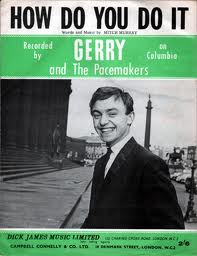 One three-hour session was all that was thought to be necessary, unlike the two three-hour sessions they needed to recording their first single. Interestingly, George Martin's original instincts were correct, Gerry And The Pacemakers cutting "How Do You Do It" shortly thereafter and making it a #1 hit in Britain as well as international success. One three-hour session was all that was thought to be necessary, unlike the two three-hour sessions they needed to recording their first single. Interestingly, George Martin's original instincts were correct, Gerry And The Pacemakers cutting "How Do You Do It" shortly thereafter and making it a #1 hit in Britain as well as international success.
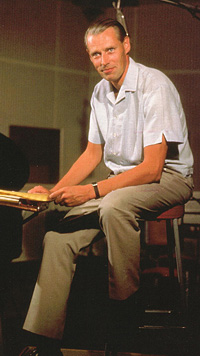 When the day did arrive for recording The Beatles' second single, November 26th, 1962 in EMI Studio Two, no session drummer was in sight, George Martin acquiescing to Ringo’s rightful place behind the drum kit. The band arrived in the studio at 6 pm for an hour long rehearsal with fan Roberta (Bobby) Brown present for moral support. In fact, during this rehearsal, Lennon suggested she play piano during the quick ascending chords in each one of the three verses of "Please Please Me." In Mark Lewisohn's book "Tune In," she relates: "John was showing me these chords on the piano, saying, 'So Bobby, you can play this...' and I just said to him, 'You're mad. There's no way I can do this.' He said, 'But you can play piano,' and I said, 'Yes, but I have to have a piece of music in front of me.' It went on like this for some time, and in the end I just said 'I can't do it.'" Not being a member of the Musicians' Union would undoubtedly have prevented her performance appearing on the recording, not to mention that George Martin probably would have put the kibosh to it anyway. When the day did arrive for recording The Beatles' second single, November 26th, 1962 in EMI Studio Two, no session drummer was in sight, George Martin acquiescing to Ringo’s rightful place behind the drum kit. The band arrived in the studio at 6 pm for an hour long rehearsal with fan Roberta (Bobby) Brown present for moral support. In fact, during this rehearsal, Lennon suggested she play piano during the quick ascending chords in each one of the three verses of "Please Please Me." In Mark Lewisohn's book "Tune In," she relates: "John was showing me these chords on the piano, saying, 'So Bobby, you can play this...' and I just said to him, 'You're mad. There's no way I can do this.' He said, 'But you can play piano,' and I said, 'Yes, but I have to have a piece of music in front of me.' It went on like this for some time, and in the end I just said 'I can't do it.'" Not being a member of the Musicians' Union would undoubtedly have prevented her performance appearing on the recording, not to mention that George Martin probably would have put the kibosh to it anyway.
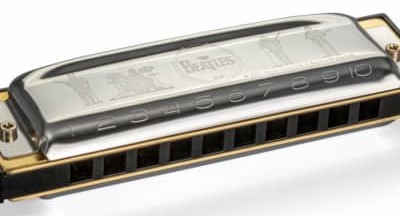 This rehearsal led straight into the proper three hour recording session that ran from 7 to 10 pm. The band jumped right into the newly arranged “Please Please Me” at 7 pm. It was suggested by George Martin that John play harmonica for the main riff of the song rather than this being played on guitar by George Harrison. But, unlike the situation with “Love Me Do,” it was decided to record the song live with Lennon playing guitar and to overdub the harmonica afterwards. After a suitable recording of the song was recorded (the best take unknown), the two-track tape was then re-recorded onto another two-track tape machine while the harmonica segments were performed simultaneously by John. The result was a combination of Harrison on guitar and Lennon on harmonica both performing that recognizable riff, the harmonica yet again being a distinctive feature on a Beatles single. This rehearsal led straight into the proper three hour recording session that ran from 7 to 10 pm. The band jumped right into the newly arranged “Please Please Me” at 7 pm. It was suggested by George Martin that John play harmonica for the main riff of the song rather than this being played on guitar by George Harrison. But, unlike the situation with “Love Me Do,” it was decided to record the song live with Lennon playing guitar and to overdub the harmonica afterwards. After a suitable recording of the song was recorded (the best take unknown), the two-track tape was then re-recorded onto another two-track tape machine while the harmonica segments were performed simultaneously by John. The result was a combination of Harrison on guitar and Lennon on harmonica both performing that recognizable riff, the harmonica yet again being a distinctive feature on a Beatles single.
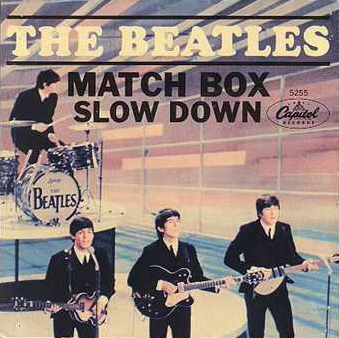 The total number of takes needed to complete the song, which included all of the harmonica overdub segments it required, amounted to 18. Lennon stated in the "New Musical Express" article: "By the time the session came around, we were so happy with the result, we couldn't get it recorded fast enough." At around 9 pm, after two hours of recording this song, George Martin made his famous exclamation from the recording booth, “You’ve just made your first #1.” This bold confidence from George Martin continued from this point on, never again suggesting The Beatles to record other people’s material for their singles, this being maintained throughout their career. While there were eight American singles released that featured cover tunes as the a-side, these were decisions that were made by US record labels and were not the official British releases. The total number of takes needed to complete the song, which included all of the harmonica overdub segments it required, amounted to 18. Lennon stated in the "New Musical Express" article: "By the time the session came around, we were so happy with the result, we couldn't get it recorded fast enough." At around 9 pm, after two hours of recording this song, George Martin made his famous exclamation from the recording booth, “You’ve just made your first #1.” This bold confidence from George Martin continued from this point on, never again suggesting The Beatles to record other people’s material for their singles, this being maintained throughout their career. While there were eight American singles released that featured cover tunes as the a-side, these were decisions that were made by US record labels and were not the official British releases.
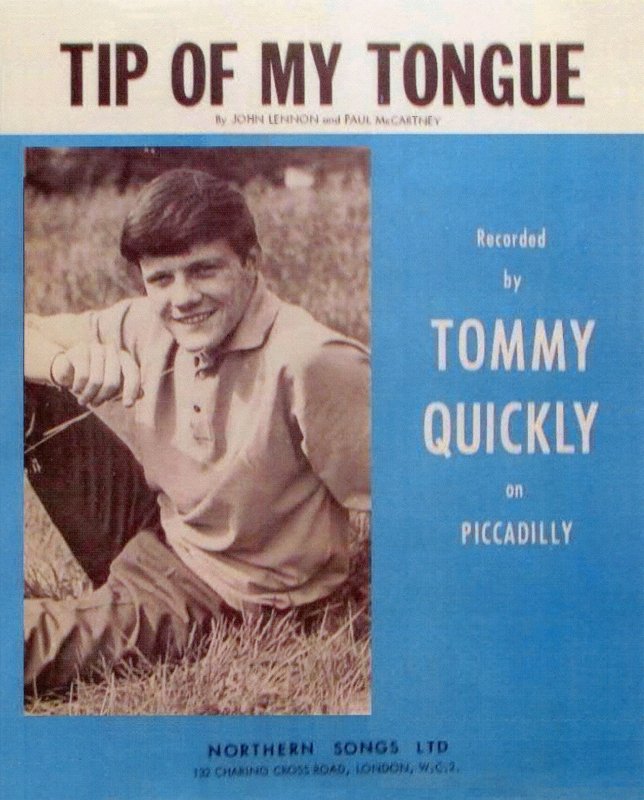 Unlike the sessions for the first single, no mixes were made on this day. The remainder of the three hour session consisted of recording two contenders for the b-side of the single, which were “Ask Me Why” and the ill-fated “Tip Of My Tongue,” which was never released because it is thought to be lost. The group eventually gave the latter inferior composition (George Martin’s opinion) to another artist in the Brian Epstein stable, Tommy Quickly, who released it as his first single in August of 1963, although it didn’t become a hit. Unlike the sessions for the first single, no mixes were made on this day. The remainder of the three hour session consisted of recording two contenders for the b-side of the single, which were “Ask Me Why” and the ill-fated “Tip Of My Tongue,” which was never released because it is thought to be lost. The group eventually gave the latter inferior composition (George Martin’s opinion) to another artist in the Brian Epstein stable, Tommy Quickly, who released it as his first single in August of 1963, although it didn’t become a hit.
 The mono mix of “Please Please Me” was created four days afterward, on November 30th, 1962, in the EMI Studio Two control room by George Martin, engineer Norman Smith and an unnamed 2nd engineer. The exact take that was used for this mix was not documented, but it was deemed suitable for the British single release (on January 11th, 1963) as well as the mono version of the British album (on March 22nd, 1963), although a slight bit of added echo is present on the British album. The mono mix of “Please Please Me” was created four days afterward, on November 30th, 1962, in the EMI Studio Two control room by George Martin, engineer Norman Smith and an unnamed 2nd engineer. The exact take that was used for this mix was not documented, but it was deemed suitable for the British single release (on January 11th, 1963) as well as the mono version of the British album (on March 22nd, 1963), although a slight bit of added echo is present on the British album.
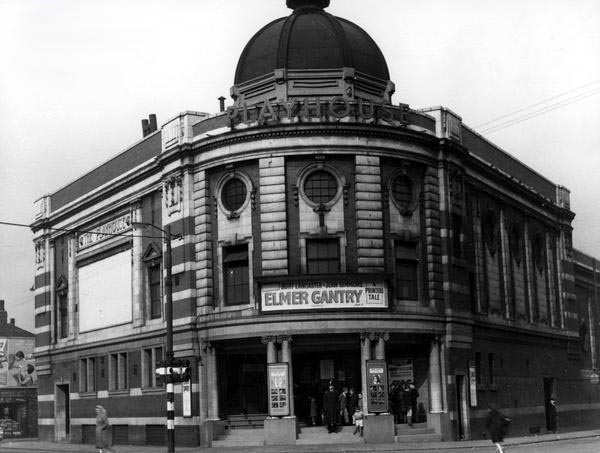 The band recorded the song "Please Please Me" a total of 12 more times in the year 1963, every one of these recordings being created specifically for broadcasting on BBC radio. The first one occurred on January 16th at the legendary Playhouse Theatre in Manchester between 8:45 and 9:30 pm for the British radio show "Here We Go," which did not get broadcast until January 25th between 5 and 5:29 pm. Then on January 22nd, Jimmy Grant produced a recording of the song for the ever-popular “Saturday Club” show at Playhouse Theatre in London between 4 and 5 pm, the show being broadcast on January 26th between 10 am and 12 noon. Also on January 22nd, they recorded it before a live audience at BBC Paris Studio in London for “The Talent Spot” between 7 and 8 pm, this show airing on January 29th between 5 and 5:29 pm. February 20th brought them to Playhouse Theatre in London between 12:31 and 1:30 pm to record the song live on the lunchtime radio show “Parade Of The Pops.” The band recorded the song "Please Please Me" a total of 12 more times in the year 1963, every one of these recordings being created specifically for broadcasting on BBC radio. The first one occurred on January 16th at the legendary Playhouse Theatre in Manchester between 8:45 and 9:30 pm for the British radio show "Here We Go," which did not get broadcast until January 25th between 5 and 5:29 pm. Then on January 22nd, Jimmy Grant produced a recording of the song for the ever-popular “Saturday Club” show at Playhouse Theatre in London between 4 and 5 pm, the show being broadcast on January 26th between 10 am and 12 noon. Also on January 22nd, they recorded it before a live audience at BBC Paris Studio in London for “The Talent Spot” between 7 and 8 pm, this show airing on January 29th between 5 and 5:29 pm. February 20th brought them to Playhouse Theatre in London between 12:31 and 1:30 pm to record the song live on the lunchtime radio show “Parade Of The Pops.”
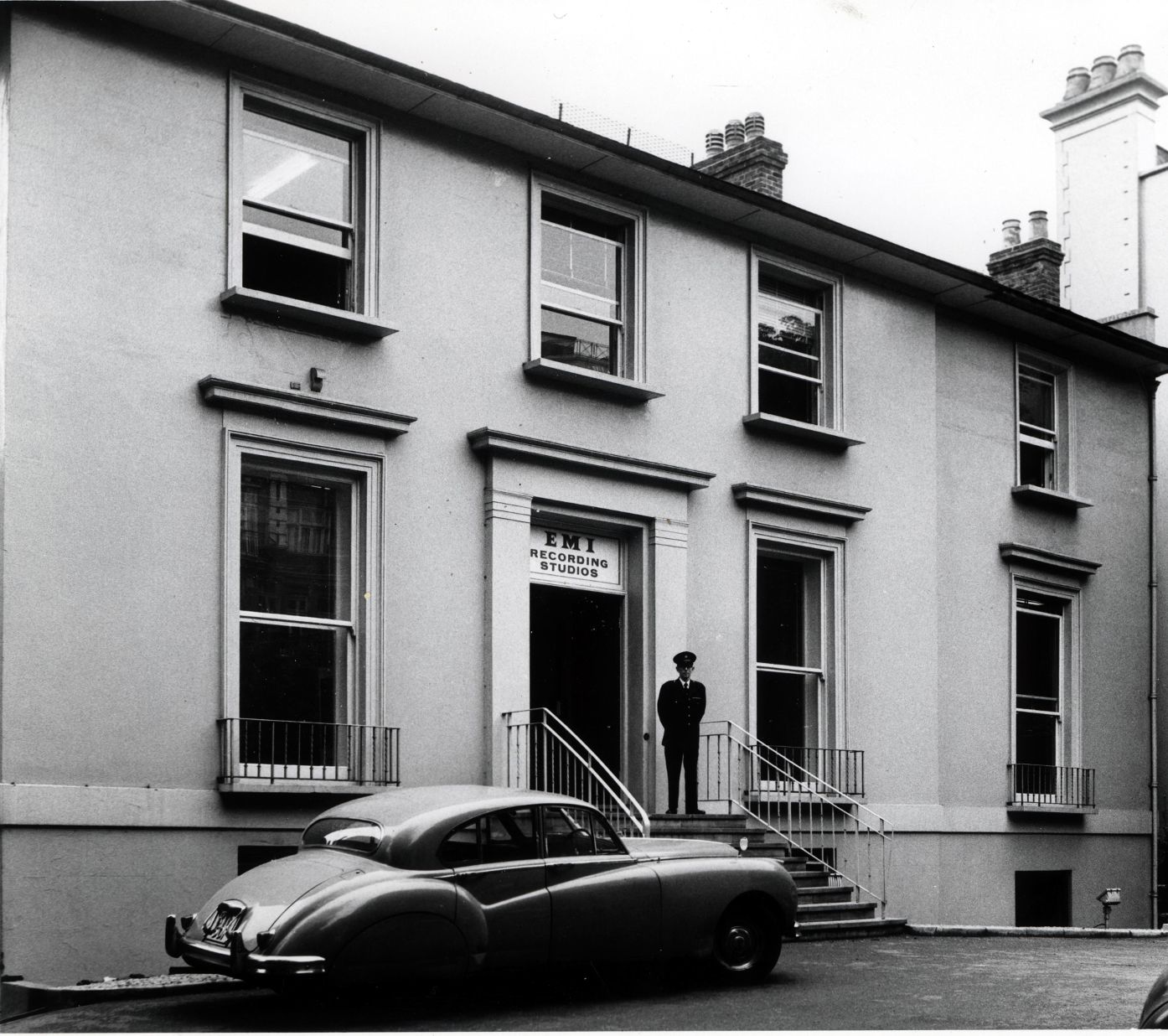 Curiously, when their entire "Please Please Me" album was being mixed for stereo on February 25th, 1963 in the control room of EMI Studio One, George Martin and his engineering staff (Norman Smith and A.B. Lincoln) decided first to construct a newer version of the album's title track by editing "take 16," "take 17" and "take 18" into one new recording. This decision was made in order to to incorporate John's overdubbed harmonica performances that are heard in the mono mix, the above mentioned takes not featuring John's harmonica since they were overdubbed afterward. After their editing was completed, they then made a stereo mix of the song which became the master for the stereo album in Britain as well as the US. Curiously, when their entire "Please Please Me" album was being mixed for stereo on February 25th, 1963 in the control room of EMI Studio One, George Martin and his engineering staff (Norman Smith and A.B. Lincoln) decided first to construct a newer version of the album's title track by editing "take 16," "take 17" and "take 18" into one new recording. This decision was made in order to to incorporate John's overdubbed harmonica performances that are heard in the mono mix, the above mentioned takes not featuring John's harmonica since they were overdubbed afterward. After their editing was completed, they then made a stereo mix of the song which became the master for the stereo album in Britain as well as the US.
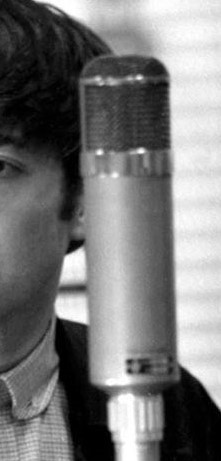 There are some subtle but noticeable differences, such as Lennon flubbing a lyric in the final verse. Instead of singing “I know you never even try, girl,” John starts out with the lyrics of the second verse by accident, which is “Why do I always…” Lennon catches himself mid-way through the line and joins McCartney who was harmonizing the correct line. This results in Lennon singing the next phrase “Come on” with a slight laugh, presumably knowing that he made the mistake. There are some subtle but noticeable differences, such as Lennon flubbing a lyric in the final verse. Instead of singing “I know you never even try, girl,” John starts out with the lyrics of the second verse by accident, which is “Why do I always…” Lennon catches himself mid-way through the line and joins McCartney who was harmonizing the correct line. This results in Lennon singing the next phrase “Come on” with a slight laugh, presumably knowing that he made the mistake.
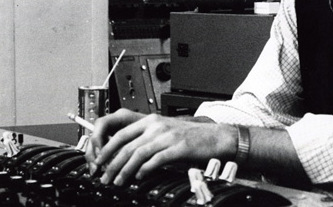 Another noted difference that is apparent in the stereo mix concerns the harmonica parts in the various sections of the song. In order to edit in those harmonica pieces into the stereo mix, they had to actually sync-up the finished mono mix with the stereo mix in those areas of the song. This resulted in an odd sounding effect because of the two separate takes of this song going at slightly different speeds. This difference is especially noticeable is the final ten seconds of the song where the original mono mix with the harmonica does not match up very well with the harmonica-less takes chosen to create the stereo mix. Nonetheless, this stereo mix was deemed the best that the EMI team could do given that the master tape containing the harmonica overdubs no longer existed. Another noted difference that is apparent in the stereo mix concerns the harmonica parts in the various sections of the song. In order to edit in those harmonica pieces into the stereo mix, they had to actually sync-up the finished mono mix with the stereo mix in those areas of the song. This resulted in an odd sounding effect because of the two separate takes of this song going at slightly different speeds. This difference is especially noticeable is the final ten seconds of the song where the original mono mix with the harmonica does not match up very well with the harmonica-less takes chosen to create the stereo mix. Nonetheless, this stereo mix was deemed the best that the EMI team could do given that the master tape containing the harmonica overdubs no longer existed.
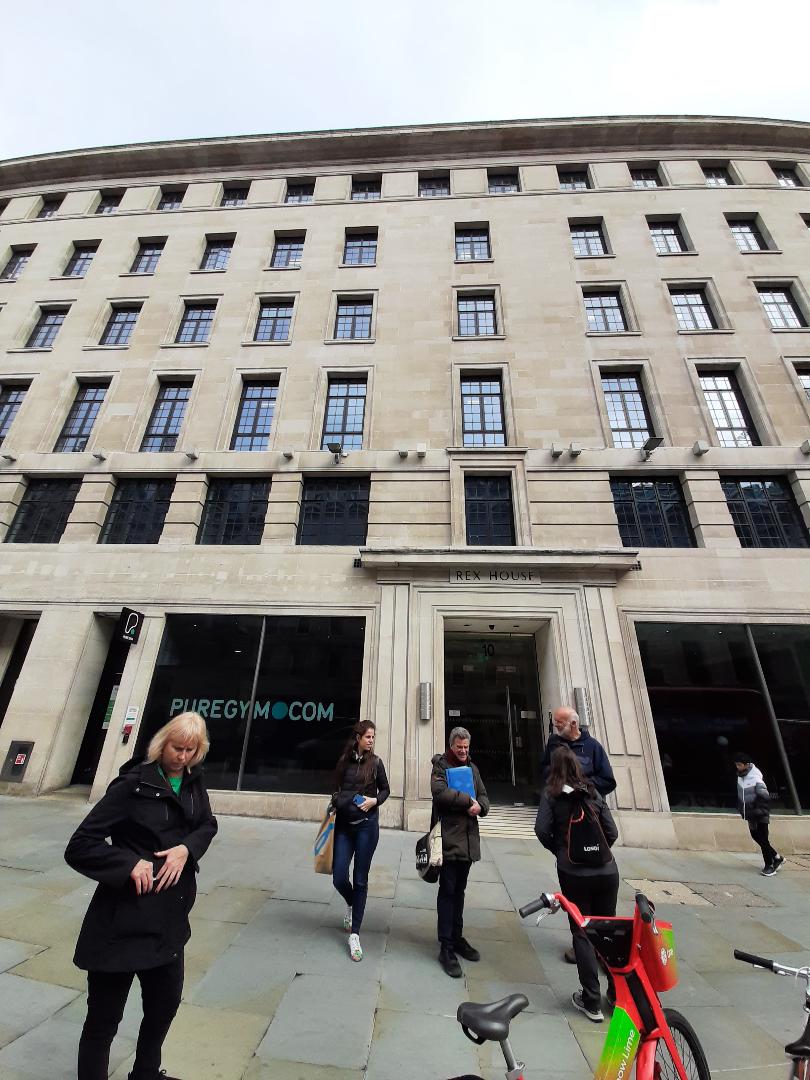 More 1963 BBC radio recordings of "Please Please Me" followed, the next being on March 6th at The Playhouse Theatre in Manchester between 8 and 8:45 pm for the show “Here We Go,” which was produced by Peter Pilbeam and broadcast on March 12th between 5 and 5:29 pm. Then on March 16th in Studio 3A of the Broadcasting House in London between 10 am and 12 noon, The Beatles recorded a live performance of the song for “Saturday Club,” which was produced by Jimmy Grant and Bernie Andrews. The next recording was on March 21st in Studio One of BBC Piccadilly Studios in London between 1 and 2 pm for the show “On The Scene,”which aired on March 28th between 5 and 5:29 pm. The group was back in Studio One of BBC Piccadilly Studios on April 1st to record the song between 2:30 and 5:30 pm for the show “Side By Side,” which aired on April 22nd between 5 and 5:29 pm. More 1963 BBC radio recordings of "Please Please Me" followed, the next being on March 6th at The Playhouse Theatre in Manchester between 8 and 8:45 pm for the show “Here We Go,” which was produced by Peter Pilbeam and broadcast on March 12th between 5 and 5:29 pm. Then on March 16th in Studio 3A of the Broadcasting House in London between 10 am and 12 noon, The Beatles recorded a live performance of the song for “Saturday Club,” which was produced by Jimmy Grant and Bernie Andrews. The next recording was on March 21st in Studio One of BBC Piccadilly Studios in London between 1 and 2 pm for the show “On The Scene,”which aired on March 28th between 5 and 5:29 pm. The group was back in Studio One of BBC Piccadilly Studios on April 1st to record the song between 2:30 and 5:30 pm for the show “Side By Side,” which aired on April 22nd between 5 and 5:29 pm.
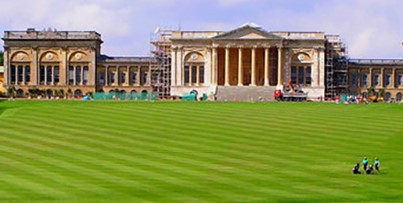 They also recorded it on April 3rd at The Playhouse Theatre in London between 8:30 and 9:45 pm for BBC radio show “Easy Beat,” this song airing on April 7th between 10:31 and 11:30 am. On April 4th, a surprisingly clean and vibrant private recording of the song was made by John Bloomfield, a fifteen-year-old student in the audience of Stowe School at Roxburgh Hall in Stowe where The Beatles performed a total of 22 songs between 6:30 to 7:30 pm. Another private recording of the song was made on April 5th when The Beatles gave an early evening live performance for record company executives at EMI House in central London. This recording was made during the presentation ceremony to celebrate the award of the band's first silver disc for their Parlophone single "Please Please Me," Paul counting off the song with "One, Two, Nine...!" They also recorded it on April 3rd at The Playhouse Theatre in London between 8:30 and 9:45 pm for BBC radio show “Easy Beat,” this song airing on April 7th between 10:31 and 11:30 am. On April 4th, a surprisingly clean and vibrant private recording of the song was made by John Bloomfield, a fifteen-year-old student in the audience of Stowe School at Roxburgh Hall in Stowe where The Beatles performed a total of 22 songs between 6:30 to 7:30 pm. Another private recording of the song was made on April 5th when The Beatles gave an early evening live performance for record company executives at EMI House in central London. This recording was made during the presentation ceremony to celebrate the award of the band's first silver disc for their Parlophone single "Please Please Me," Paul counting off the song with "One, Two, Nine...!"
.jpg) May 21st was the date for the song's recording London's Playhouse Theatre between 10 and 11:15 pm before their live audience for “Steppin’ Out,” this BBC show being produced by Terry Henebery and broadcast on June 3rd between 10:31 and 11:30 am. "Please Please Me" was next recorded on July 16th at BBC Paris Studio in London between 6 and 8:30 pm for the ninth edition of their “Pop Go The Beatles” show, which was produced by Ian Grant and broadcast on August 13th between 5 and 5:29 pm. The last BBC recording of "Please Please Me" was on October 16th at The Playhouse Theatre in London between 9 and 10 pm for the radio show “Easy Beat,” which aired on October 20th between 10:31 and 11:30 am. May 21st was the date for the song's recording London's Playhouse Theatre between 10 and 11:15 pm before their live audience for “Steppin’ Out,” this BBC show being produced by Terry Henebery and broadcast on June 3rd between 10:31 and 11:30 am. "Please Please Me" was next recorded on July 16th at BBC Paris Studio in London between 6 and 8:30 pm for the ninth edition of their “Pop Go The Beatles” show, which was produced by Ian Grant and broadcast on August 13th between 5 and 5:29 pm. The last BBC recording of "Please Please Me" was on October 16th at The Playhouse Theatre in London between 9 and 10 pm for the radio show “Easy Beat,” which aired on October 20th between 10:31 and 11:30 am.
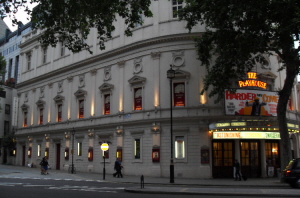 Interestingly, they did record a fragment of "Please Please Me" at The Playhouse Theatre in London on December 17th of that year between 3 and 6:30 pm as a part of what was called their "Chrimble Mudley," this medley consisting of a 29-second recording featuring a small bit of each UK Beatles single up to that point insterspersed with the classic Christmas song "Rudolph The Red-Nosed Reindeer." This was produced by Jimmy Grant and Bernie Andrews and broadcast on the Christmas edition of "Saturday Club" on December 21st between 10 am and 12 noon. Interestingly, they did record a fragment of "Please Please Me" at The Playhouse Theatre in London on December 17th of that year between 3 and 6:30 pm as a part of what was called their "Chrimble Mudley," this medley consisting of a 29-second recording featuring a small bit of each UK Beatles single up to that point insterspersed with the classic Christmas song "Rudolph The Red-Nosed Reindeer." This was produced by Jimmy Grant and Bernie Andrews and broadcast on the Christmas edition of "Saturday Club" on December 21st between 10 am and 12 noon.
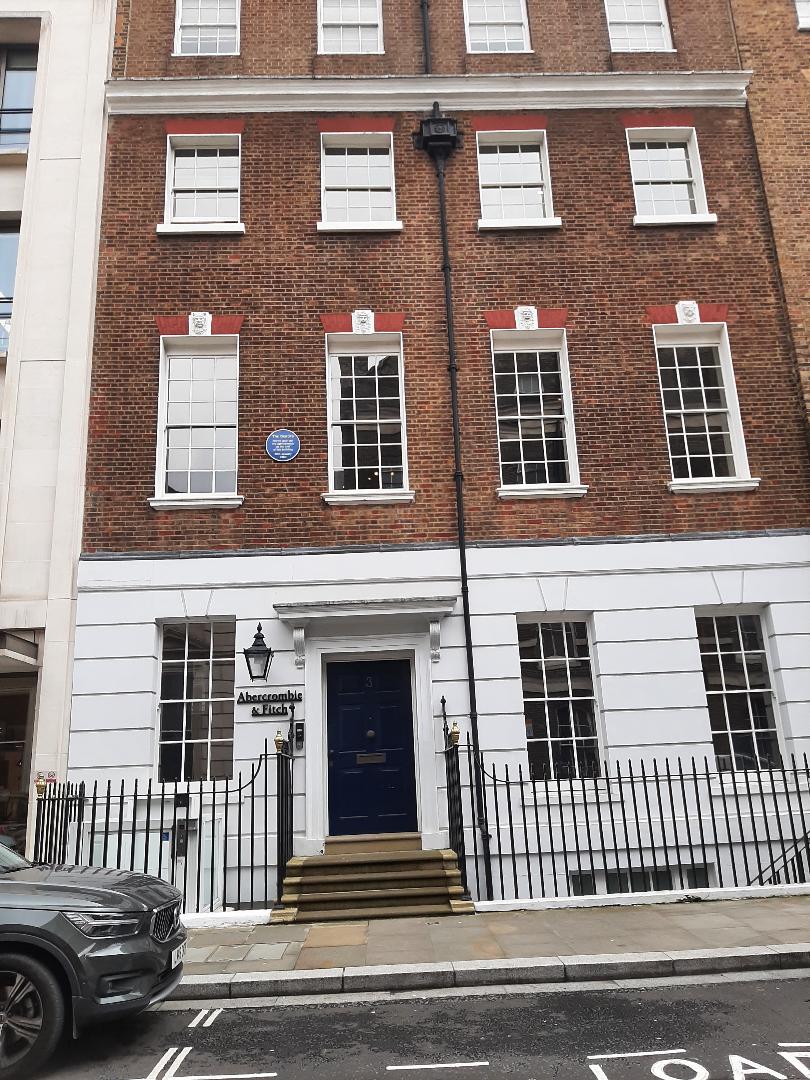 In order to be complete, mention should be made of a later January 23rd, 1969 recording session at Apple Studios. The Beatles were rehearsing / recording material for their latest project, “Get Back,” which eventually resulted in the album “Let It Be,” released on May 8th, 1970. The rehearsals for this project were done while the tapes were rolling, catching The Beatles joking, arguing, and engaging in impromptu jam sessions. In order to be complete, mention should be made of a later January 23rd, 1969 recording session at Apple Studios. The Beatles were rehearsing / recording material for their latest project, “Get Back,” which eventually resulted in the album “Let It Be,” released on May 8th, 1970. The rehearsals for this project were done while the tapes were rolling, catching The Beatles joking, arguing, and engaging in impromptu jam sessions.
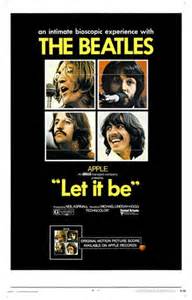 During one of the rehearsals for the song “Get Back” on this day, a suggestion was made to stand up (instead of sitting) to simulate them being on stage as in their early years. This resulted in a humorous rendition of the first verse of “Help!” which was then followed by the very beginnings of “Please Please Me,” resulting in erupting laughter and the return to sitting down for the remainder of the band's rehearsals. This footage did not make it into the "Let It Be" movie but was included in Peter Jackson's "Get Back" series. During one of the rehearsals for the song “Get Back” on this day, a suggestion was made to stand up (instead of sitting) to simulate them being on stage as in their early years. This resulted in a humorous rendition of the first verse of “Help!” which was then followed by the very beginnings of “Please Please Me,” resulting in erupting laughter and the return to sitting down for the remainder of the band's rehearsals. This footage did not make it into the "Let It Be" movie but was included in Peter Jackson's "Get Back" series.
 Also during these sessions, Paul briefly touched on "Please Please Me" while sitting at the piano in between the last two takes of the song "Let It Be" at Apple Studios on January 26th, 1969. Sometime during 2021, producer Giles Martin (George Martin's son) and engineer Sam Okell thought to include this while creating stereo mixes for their Anniversary release of the "Let It Be" album that came out later that year. Also during these sessions, Paul briefly touched on "Please Please Me" while sitting at the piano in between the last two takes of the song "Let It Be" at Apple Studios on January 26th, 1969. Sometime during 2021, producer Giles Martin (George Martin's son) and engineer Sam Okell thought to include this while creating stereo mixes for their Anniversary release of the "Let It Be" album that came out later that year.
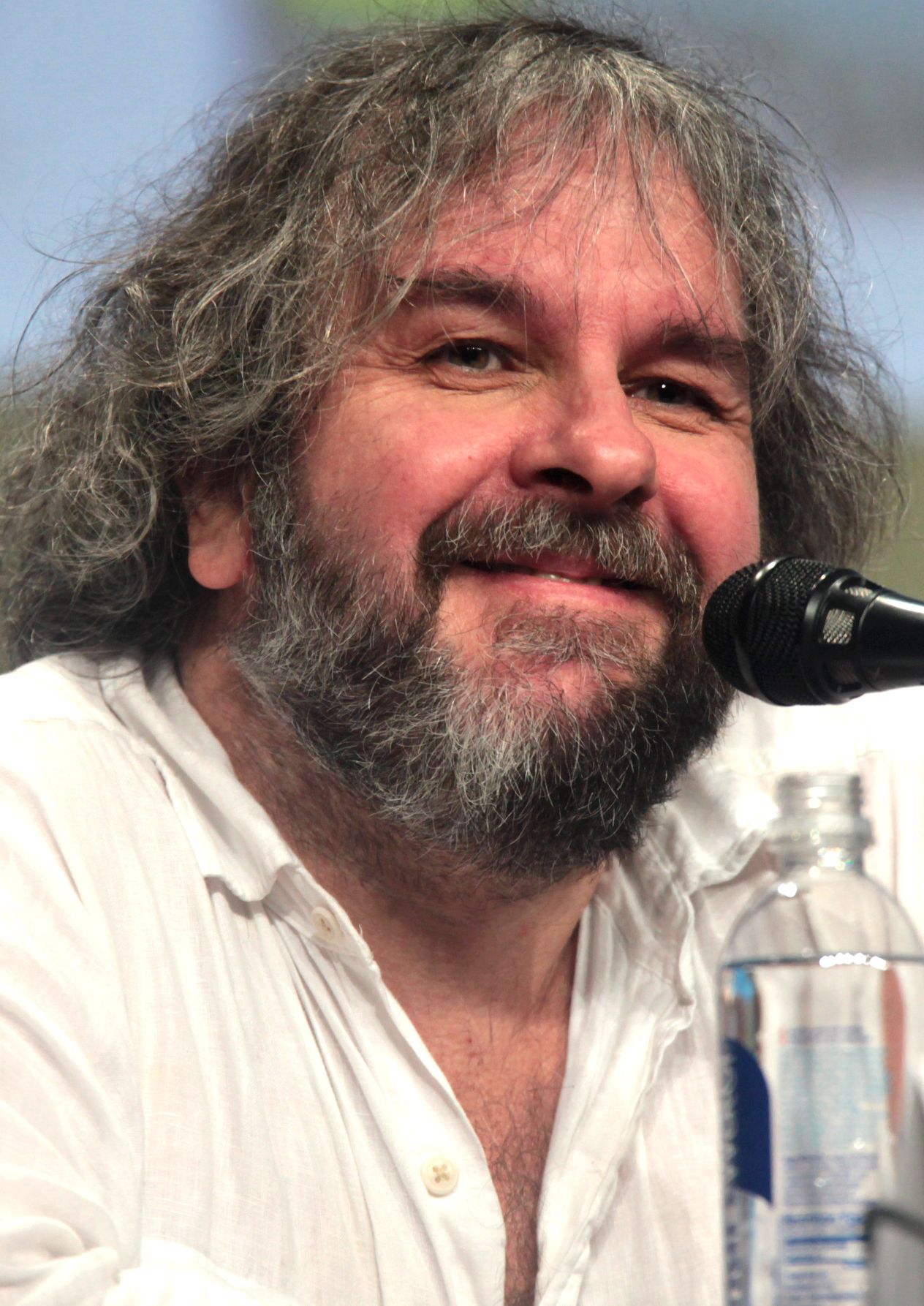 In 2023, Giles Martin was faced with a difficult task when asked to create a "demix remix" of "Please Please Me" for inclusion in a 50th Anniversary edition of "The Beatles / 1962 - 1966" (aka "The Red Album"). A new stereo mix was proposed but, since the original take of the song with John's harmonica no longer existed, all he was able to use was the existing stereo mix created on February 25th, 1963, this mix including the syncing problems and vocal flubs that are detailed above. Peter Jackson's AI technology allowed Giles Martin to use this "new machine-learning technology" to then disect "individual elements that were put to tape...and were therefore impossible to seperate," as John Harris described in the liner notes of the 2023 edition of "The Red Album," and allowed them to be "untangled" and put "back together with even greater clarity and impact." In 2023, Giles Martin was faced with a difficult task when asked to create a "demix remix" of "Please Please Me" for inclusion in a 50th Anniversary edition of "The Beatles / 1962 - 1966" (aka "The Red Album"). A new stereo mix was proposed but, since the original take of the song with John's harmonica no longer existed, all he was able to use was the existing stereo mix created on February 25th, 1963, this mix including the syncing problems and vocal flubs that are detailed above. Peter Jackson's AI technology allowed Giles Martin to use this "new machine-learning technology" to then disect "individual elements that were put to tape...and were therefore impossible to seperate," as John Harris described in the liner notes of the 2023 edition of "The Red Album," and allowed them to be "untangled" and put "back together with even greater clarity and impact."
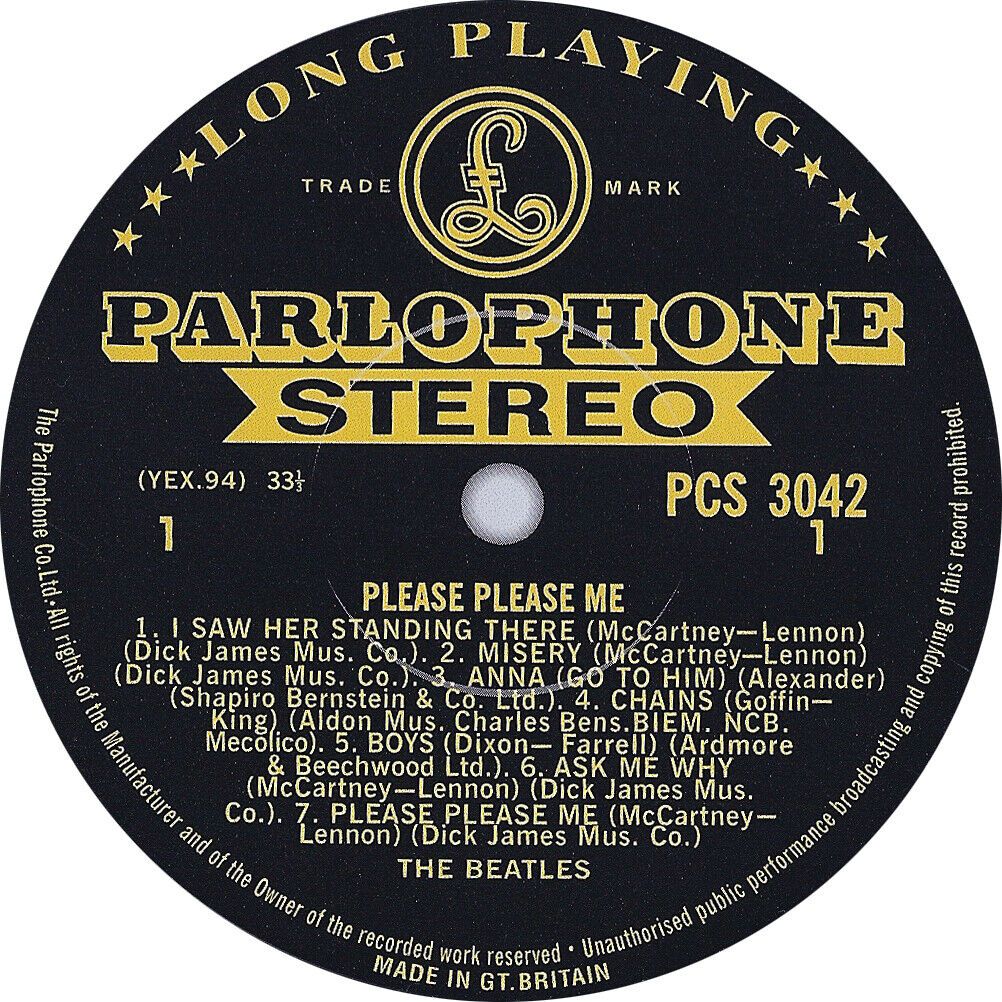 While Beatles fans anticipated the syncing of the harmonica parts to be more aligned with the rest of the performance in this 2023 stereo mix, the unfortunate results here showed the all-too-familiar disorienting listening experience in the closing moments of the song due to their use of the inferior 1963 stereo mix. The vibrancy and clarity of this new stereo mix, nevertheless, is superior to the painstaking but limited technical achievements back in 1963, the separation of Ringo's drum fills (toms panned right and snare panned left) being most noteworthy. While the superior and highly available mono mix could easily have been used here as had been done with "Love Me Do," which could have been disected and manipulated with Peter Jackson's AI technology to create a suitable and in-sync stereo mix, a choice was made to instead use the recognized inferior stereo mix from February 25th, 1963. This is somewhat disappointing. While Beatles fans anticipated the syncing of the harmonica parts to be more aligned with the rest of the performance in this 2023 stereo mix, the unfortunate results here showed the all-too-familiar disorienting listening experience in the closing moments of the song due to their use of the inferior 1963 stereo mix. The vibrancy and clarity of this new stereo mix, nevertheless, is superior to the painstaking but limited technical achievements back in 1963, the separation of Ringo's drum fills (toms panned right and snare panned left) being most noteworthy. While the superior and highly available mono mix could easily have been used here as had been done with "Love Me Do," which could have been disected and manipulated with Peter Jackson's AI technology to create a suitable and in-sync stereo mix, a choice was made to instead use the recognized inferior stereo mix from February 25th, 1963. This is somewhat disappointing.
Song Structure and Style
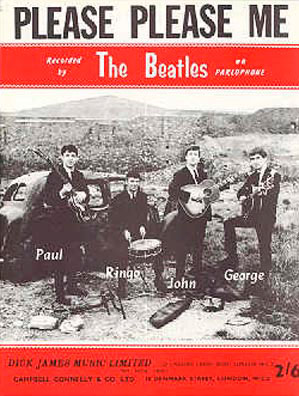 A detailed examination of “Please Please Me” shows the proper way to write a hit pop song in the '60s. It has all the ingredients that demanded attention from its listeners, including a very interesting eye-catching title, an introductory harmonica riff that effortlessly sticks in your memory, a fair amount of breaks which make the listener take notice of the song's key focal points, and a dramatic ending that leaves you with a satisfied feeling. Regarding the song's arrangement, as stated above, John Lennon was quoted as stating that The Beatles “aimed this one straight at the hit parade.” A detailed examination of “Please Please Me” shows the proper way to write a hit pop song in the '60s. It has all the ingredients that demanded attention from its listeners, including a very interesting eye-catching title, an introductory harmonica riff that effortlessly sticks in your memory, a fair amount of breaks which make the listener take notice of the song's key focal points, and a dramatic ending that leaves you with a satisfied feeling. Regarding the song's arrangement, as stated above, John Lennon was quoted as stating that The Beatles “aimed this one straight at the hit parade.”
The song was written in the standard format that encompasses most of the early Beatles catalog, which is the 'verse/ verse/ bridge/ verse' style (or aaba). They opted not to incorporate a solo of any kind or a repetition of the bridge and final verse, as they were prone to do. Either of these ingredients would have created a prolonged and ineffective mood, as well as exceeding the two-and-a-half minute rule for a pop song in the early '60s.
 They start the song with a four bar introduction, premiering the memorable riff played simultaneously by Lennon on harmonica and Harrison on guitar. We do know that, even though George Martin had much to do with the arrangement of intros on their original songs, The Beatles wrote this riff themselves, because George Harrison was playing it repeatedly on guitar during the song’s rehearsal on September 4th, 1962 before George Martin had even heard it. They start the song with a four bar introduction, premiering the memorable riff played simultaneously by Lennon on harmonica and Harrison on guitar. We do know that, even though George Martin had much to do with the arrangement of intros on their original songs, The Beatles wrote this riff themselves, because George Harrison was playing it repeatedly on guitar during the song’s rehearsal on September 4th, 1962 before George Martin had even heard it.
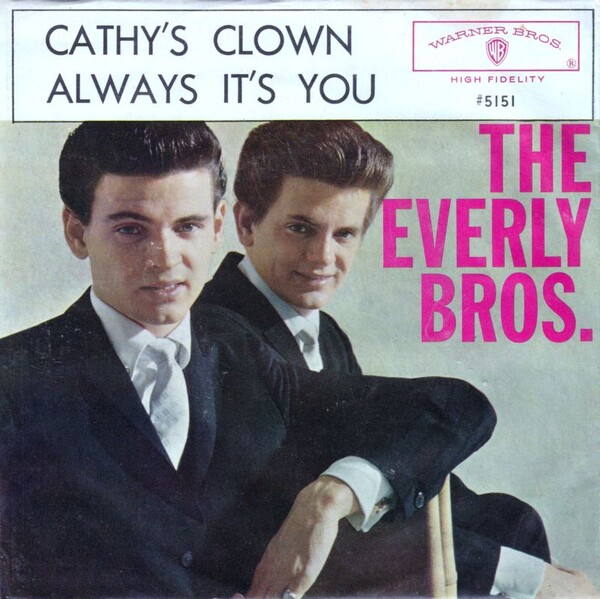 We then enter into the first verse, this being sixteen measures in length. The melody line begins with the opening riff being sung in harmony by Lennon and McCartney, John singing the actual melody line with Paul sustaining one higher harmony note throughout the phrase. McCartney later referred to this as being called a "cadence." A Liverpool music teacher once informed the band that she taught this "candance" to her pupils, citing "Please Please Me" as its source. As stated above, McCartney got the idea from “Cathy’s Clown” by The Everly Brothers, which uses this cadence to good effect in its chorus. We then enter into the first verse, this being sixteen measures in length. The melody line begins with the opening riff being sung in harmony by Lennon and McCartney, John singing the actual melody line with Paul sustaining one higher harmony note throughout the phrase. McCartney later referred to this as being called a "cadence." A Liverpool music teacher once informed the band that she taught this "candance" to her pupils, citing "Please Please Me" as its source. As stated above, McCartney got the idea from “Cathy’s Clown” by The Everly Brothers, which uses this cadence to good effect in its chorus.
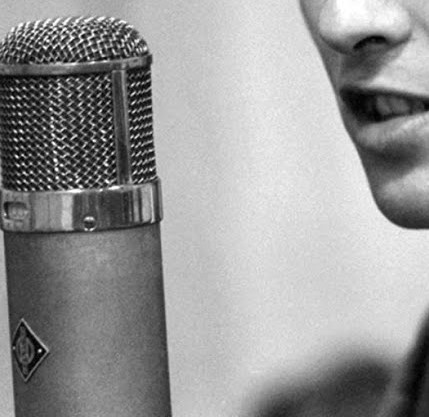 This vocal "cadence" is then repeated (with different lyrics) before a dramatic break occurs, introducing a new guitar riff that segues directly into an anticipatory “Come On” call-and-response section of the verse. The "calls" are vocalized solo by John, while the "responses" are harmonized by both Paul and George. This climaxes into the title of the song near the end of the verse, which acts as the true hook line of the song. Then, once again, we hear the harmonica / guitar riff to set the stage for the second verse. This vocal "cadence" is then repeated (with different lyrics) before a dramatic break occurs, introducing a new guitar riff that segues directly into an anticipatory “Come On” call-and-response section of the verse. The "calls" are vocalized solo by John, while the "responses" are harmonized by both Paul and George. This climaxes into the title of the song near the end of the verse, which acts as the true hook line of the song. Then, once again, we hear the harmonica / guitar riff to set the stage for the second verse.
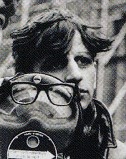 Verse two repeats the identical musical structure of verse one, but there is an unexpected break containing a drum fill by Ringo which is used as a segue to the ten measure bridge. The drum fill, played by Andy White in the fourth measure on the rendition recorded on September 11th, 1962, is replaced by “in my heart,” which is harmonized by Paul and George. Instead, a drum fill is performed by Ringo in the third measure. We see a partial reprise of the verse structure at the end of the bridge, beginning with the words “you, oh yeah, why do you make me blue” mimicking the melody line of “please me, oh yeah, like I please you.” Each of these phrases could be sung interchangeably. Verse two repeats the identical musical structure of verse one, but there is an unexpected break containing a drum fill by Ringo which is used as a segue to the ten measure bridge. The drum fill, played by Andy White in the fourth measure on the rendition recorded on September 11th, 1962, is replaced by “in my heart,” which is harmonized by Paul and George. Instead, a drum fill is performed by Ringo in the third measure. We see a partial reprise of the verse structure at the end of the bridge, beginning with the words “you, oh yeah, why do you make me blue” mimicking the melody line of “please me, oh yeah, like I please you.” Each of these phrases could be sung interchangeably.
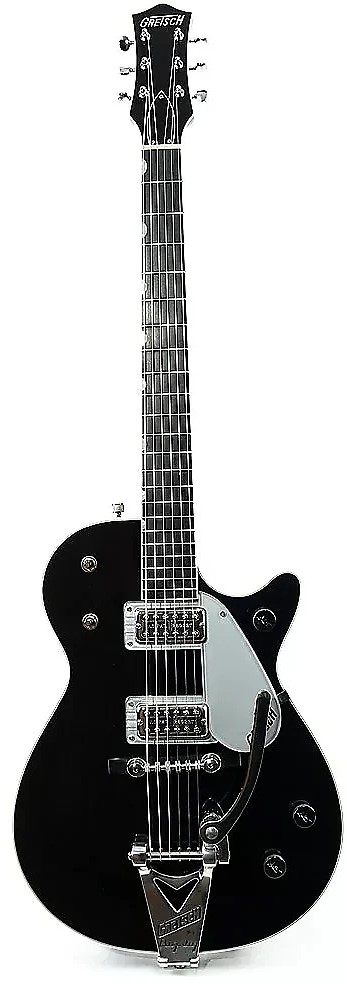 The bridge does not move to any uncharted territory with its chord structure, as the three chords that appear in the verses are repeated throughout. The interest here lies in the rapid fire eighth notes used predominantly throughout the bridge as apposed to mostly hearing quarter notes in the verses. This suggests an urgency which creates a counterpoint to the verses’ simple-but-catchy melody line. The bridge does not move to any uncharted territory with its chord structure, as the three chords that appear in the verses are repeated throughout. The interest here lies in the rapid fire eighth notes used predominantly throughout the bridge as apposed to mostly hearing quarter notes in the verses. This suggests an urgency which creates a counterpoint to the verses’ simple-but-catchy melody line.
The final verse is a repetition of the first verse, with the exception of the conclusion, which repeats the “please please me” hook line three times for emphasis. Cleverly, their final lyric of this verse combines the word ‘please’ with the first word of the repeated last line, which becomes “like I please please me.” This clever subtlety is sung twice until the third repeated hook line ends with an exuberant and tight five chord progression which ends the song. This brings the final verse to a whopping total of twenty-one measures.
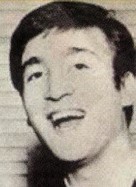 The lyrics of the song are composed as if the singer is relating a personal experience between his "girl" and himself. Actually, the only indication of this fact is in its opening line, which is repeated twice in the song, “Last night I said these words to my girl.” Other than this line, the rest of the lyrics sound as if he is speaking to his "girl," addressing her throughout the song as “you.” Therefore, it would probably be appropriate for most of the lyrics of this song to be in quotes, being that all of this is being related to a third party. The lyrics of the song are composed as if the singer is relating a personal experience between his "girl" and himself. Actually, the only indication of this fact is in its opening line, which is repeated twice in the song, “Last night I said these words to my girl.” Other than this line, the rest of the lyrics sound as if he is speaking to his "girl," addressing her throughout the song as “you.” Therefore, it would probably be appropriate for most of the lyrics of this song to be in quotes, being that all of this is being related to a third party.
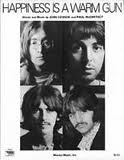 Another interesting observation concerning the lyrics is the suggestion, by author Tim Riley in his 1988 book "Telly Me Why," that “Please Please Me” is the “first real oral sex pop song.” Although listeners can interpret the song to be written about this subject, it seems unlikely that Lennon would have tackled this subject this early in his career. In later years, he liked to touch on matters such as this, but in slyer ways, such as in “Happiness Is A Warm Gun,” “Don’t Let Me Down” and “Dig A Pony.” "Nobody knows what you are talking about in a song," Paul stated during the "Sgt Pepper" launch party on May 19th, 1967, adding: "If they had wanted to, they could have found plenty of double meanings in our early stuff. How about 'I'll Keep You Satisfied' or 'Please Please Me'? Everything has a double meaning if you look for it long enough." But since The Beatles, as of this date, specifically deny ‘oral sex’ as the subject of “Please Please Me,” Paul does bring out in his book "The Lyrics," as detailed above, that John must have meant "Please have intercourse with me. So, pretty please have intercouse with me, I beg you to have intercourse with me!" Another interesting observation concerning the lyrics is the suggestion, by author Tim Riley in his 1988 book "Telly Me Why," that “Please Please Me” is the “first real oral sex pop song.” Although listeners can interpret the song to be written about this subject, it seems unlikely that Lennon would have tackled this subject this early in his career. In later years, he liked to touch on matters such as this, but in slyer ways, such as in “Happiness Is A Warm Gun,” “Don’t Let Me Down” and “Dig A Pony.” "Nobody knows what you are talking about in a song," Paul stated during the "Sgt Pepper" launch party on May 19th, 1967, adding: "If they had wanted to, they could have found plenty of double meanings in our early stuff. How about 'I'll Keep You Satisfied' or 'Please Please Me'? Everything has a double meaning if you look for it long enough." But since The Beatles, as of this date, specifically deny ‘oral sex’ as the subject of “Please Please Me,” Paul does bring out in his book "The Lyrics," as detailed above, that John must have meant "Please have intercourse with me. So, pretty please have intercouse with me, I beg you to have intercourse with me!"
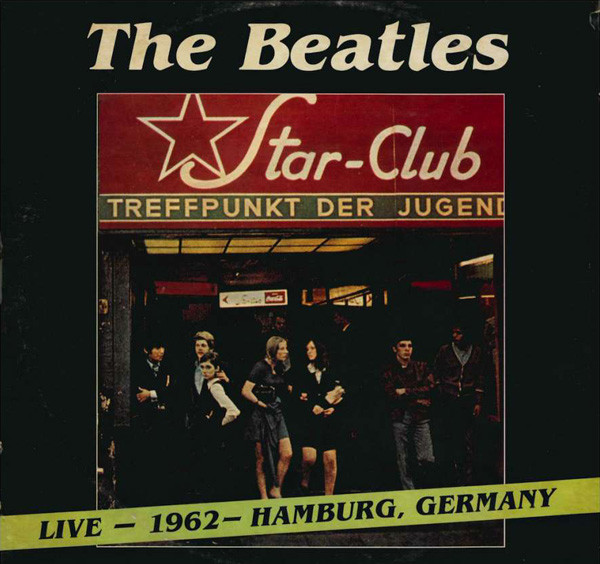 The excellent musicianship heard on this track displays The Beatles to be an impressively tight unit, trained from years of experience in Hamburg as well as The Cavern Club. All the intricate breaks and unpredictable changes are shown to be delivered effortlessly, showing the listener what the band was really capable of even at this early stage. The excellent musicianship heard on this track displays The Beatles to be an impressively tight unit, trained from years of experience in Hamburg as well as The Cavern Club. All the intricate breaks and unpredictable changes are shown to be delivered effortlessly, showing the listener what the band was really capable of even at this early stage.
 Ringo shows an innate ability to hold his own even when mimicking Andy White’s work from the previous recording session. Paul is in top form performing excellent bass work while harmonizing without losing a bit of pitch. John’s last minute adaptation to harmonica was an outstanding fit for the song, continuing the identifiable, although short-lived, trend of hit singles featuring that instrument. Ringo shows an innate ability to hold his own even when mimicking Andy White’s work from the previous recording session. Paul is in top form performing excellent bass work while harmonizing without losing a bit of pitch. John’s last minute adaptation to harmonica was an outstanding fit for the song, continuing the identifiable, although short-lived, trend of hit singles featuring that instrument.
George also shows himself very adept at performing the guitar riffs that became one of the trademarks of the song. He was a little shaky with this task when they attempted to record the song on September 11th, but during the two-and-a-half months that transpired between sessions, he was quite well-rehearsed enough to be up for the task.
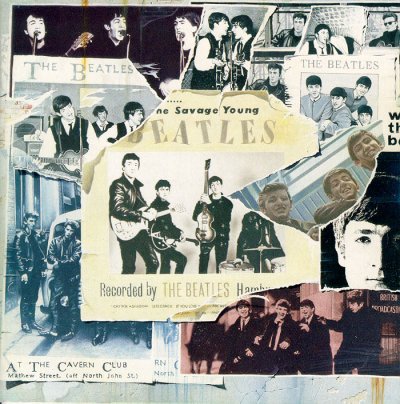 Of curious interest is the different guitar riff at the end of the bridge. On the stereo recording of the song, it is noticeable that the notes he is playing on the riff are different than the harmonica which he always plays in unison with. It is the same way on the mono recording, although it’s hard to pick out of that mix. And, when listening to the many recordings of the song done either for the BBC or on the September 11th version (made available on Anthology 1), George always plays it with these different notes at the end of the bridge. You may either conclude that it was planned, or, more likely, that it was a mistake that became so ingrained that it always came out that way. One would think that if it was planned, Lennon's harmonica part would have been played the same way at that point. It also would not fit the established pattern of the song's structure to change the guitar riff in just that one spot. Well, no one has ever claimed that The Beatles were perfect, and I’d be foolish to say they were. Of curious interest is the different guitar riff at the end of the bridge. On the stereo recording of the song, it is noticeable that the notes he is playing on the riff are different than the harmonica which he always plays in unison with. It is the same way on the mono recording, although it’s hard to pick out of that mix. And, when listening to the many recordings of the song done either for the BBC or on the September 11th version (made available on Anthology 1), George always plays it with these different notes at the end of the bridge. You may either conclude that it was planned, or, more likely, that it was a mistake that became so ingrained that it always came out that way. One would think that if it was planned, Lennon's harmonica part would have been played the same way at that point. It also would not fit the established pattern of the song's structure to change the guitar riff in just that one spot. Well, no one has ever claimed that The Beatles were perfect, and I’d be foolish to say they were.
American Releases
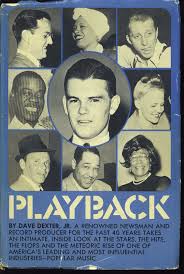 After Dave Dexter Jr. of Capitol Records refused to release the song primarily because of Lennon's harmonica, Vee-Jay Records agreed to release "Please Please Me" in the US on February 7th, 1963. No better song could have been given the privilege of becoming the a-side of the very first Beatles' single in America. There was nearly a month-long gap after its release in Britain (January 11th, 1963) due to Vee-Jay’s reluctance to release the single, being that The Beatles were unknowns in America. This delay was understandable since British acts were prone not to do well in the US up to that time. But when the record topped most of the British charts, most likely because of their ability to promote the song in the UK with live performances and national TV exposure, Vee-Jay thought to take the chance and release it in America. After Dave Dexter Jr. of Capitol Records refused to release the song primarily because of Lennon's harmonica, Vee-Jay Records agreed to release "Please Please Me" in the US on February 7th, 1963. No better song could have been given the privilege of becoming the a-side of the very first Beatles' single in America. There was nearly a month-long gap after its release in Britain (January 11th, 1963) due to Vee-Jay’s reluctance to release the single, being that The Beatles were unknowns in America. This delay was understandable since British acts were prone not to do well in the US up to that time. But when the record topped most of the British charts, most likely because of their ability to promote the song in the UK with live performances and national TV exposure, Vee-Jay thought to take the chance and release it in America.
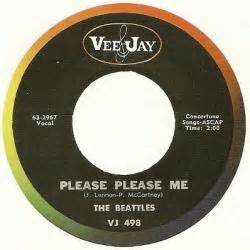 Although WLS in Chicago did give the record airplay (February 8th, 1963 being the date of the first time The Beatles were heard on American radio), resulting in the song appearing in their local chart for a couple weeks, the single failed to take hold nationally. This song did not make any appearance on the Billboard Hot 100 at that time, nor on any other national singles chart in the US. This was just as well, since the artist listed on the label, as well as on promotional ads, was misspelled as “The Beattles.” The lucky 7,310 fans who had obtained a copy through the years now have a highly prized collector's item (if it's in good shape, that is). Although WLS in Chicago did give the record airplay (February 8th, 1963 being the date of the first time The Beatles were heard on American radio), resulting in the song appearing in their local chart for a couple weeks, the single failed to take hold nationally. This song did not make any appearance on the Billboard Hot 100 at that time, nor on any other national singles chart in the US. This was just as well, since the artist listed on the label, as well as on promotional ads, was misspelled as “The Beattles.” The lucky 7,310 fans who had obtained a copy through the years now have a highly prized collector's item (if it's in good shape, that is).
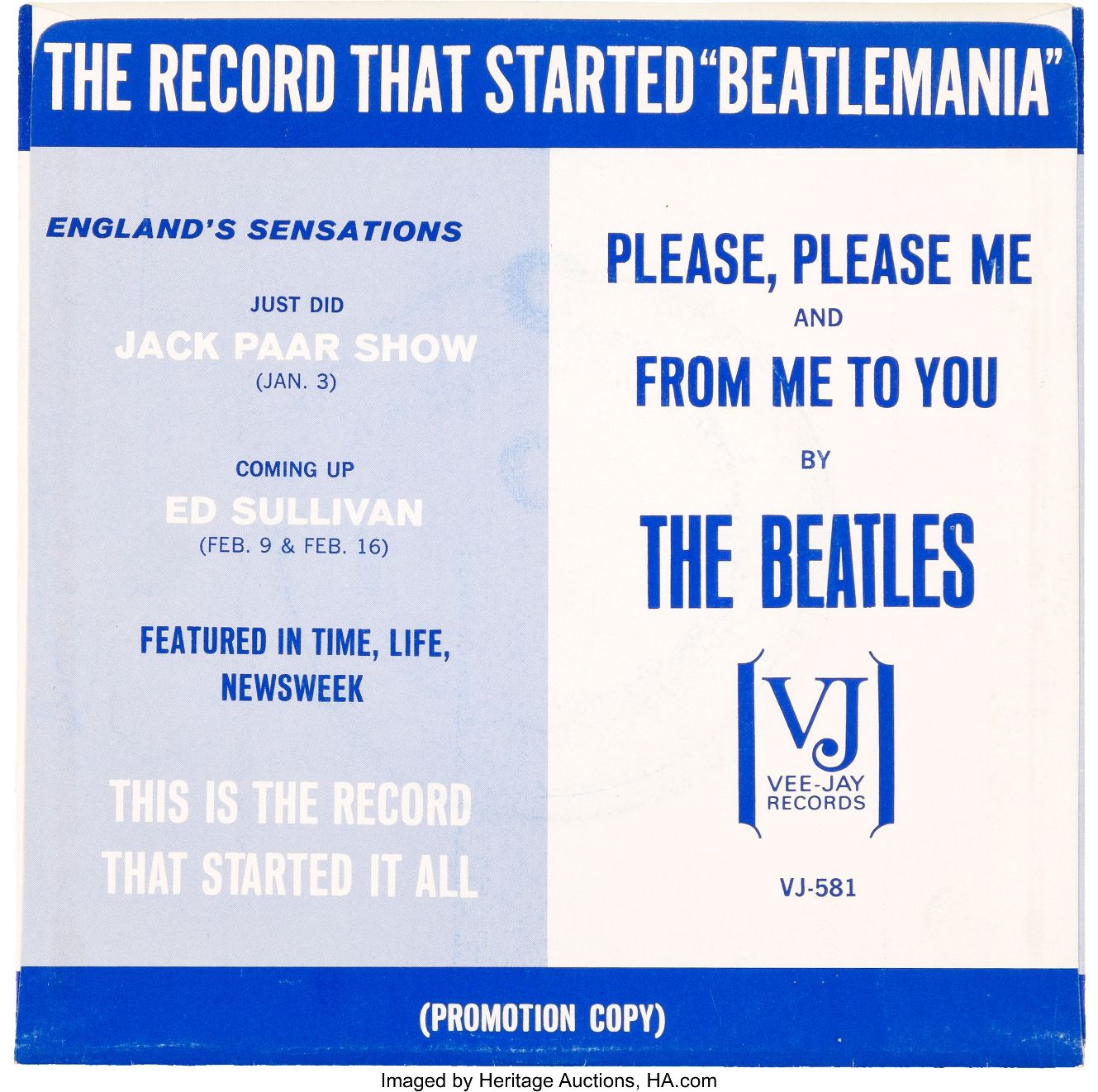 The next US release of the song came on January 3rd, 1964, when their single was re-released by Vee-Jay Records as a "'Beatlemania" hit. Instead of having “Ask Me Why” as its b-side (as it was back in February 1963), they paired it with their second failed US single "From Me To You." This made a huge impact on the Billboard Hot 100 this time around, peaking at #3, not being able to pass up “I Want To Hold Your Hand” and “She Loves You” which were in the top two positions on the chart. Vee-Jay actually spelled The Beatles name correctly this time, as well as produced promo record sleeves for the single that annouced it as "The Record That Started 'Beatlemania.'" The next US release of the song came on January 3rd, 1964, when their single was re-released by Vee-Jay Records as a "'Beatlemania" hit. Instead of having “Ask Me Why” as its b-side (as it was back in February 1963), they paired it with their second failed US single "From Me To You." This made a huge impact on the Billboard Hot 100 this time around, peaking at #3, not being able to pass up “I Want To Hold Your Hand” and “She Loves You” which were in the top two positions on the chart. Vee-Jay actually spelled The Beatles name correctly this time, as well as produced promo record sleeves for the single that annouced it as "The Record That Started 'Beatlemania.'"
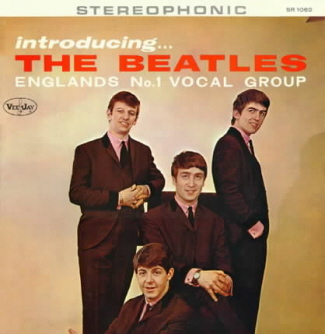 Then came the second version of the Vee-Jay album “Introducing…The Beatles.” The earlier version of the album, released on January 10th, 1964, did not feature "Please Please Me" since, when the track list was formulized way back on July 22nd, 1963, Vee-Jay didn’t want to include a song that was previously a failure. Since the pressing plates where made back in July, 1963, the label rush released this album as it was. But because of litigation with Capitol Records concerning the inclusion of “Love Me Do” and “P.S. I Love You” (which were on the first version of the LP), Vee-Jay deleted these two songs from the album and re-released it on February 10th, 1964, with "Please Please Me" and “Ask Me Why” in their place. This album now went on to become a million seller and peak at #2 on the Billboard album chart, not being able to bypass “Meet The Beatles!” at #1. Then came the second version of the Vee-Jay album “Introducing…The Beatles.” The earlier version of the album, released on January 10th, 1964, did not feature "Please Please Me" since, when the track list was formulized way back on July 22nd, 1963, Vee-Jay didn’t want to include a song that was previously a failure. Since the pressing plates where made back in July, 1963, the label rush released this album as it was. But because of litigation with Capitol Records concerning the inclusion of “Love Me Do” and “P.S. I Love You” (which were on the first version of the LP), Vee-Jay deleted these two songs from the album and re-released it on February 10th, 1964, with "Please Please Me" and “Ask Me Why” in their place. This album now went on to become a million seller and peak at #2 on the Billboard album chart, not being able to bypass “Meet The Beatles!” at #1.
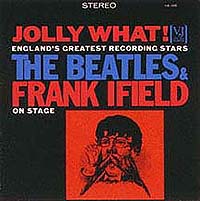 Vee-Jay Records was quick to follow this successful LP up with something they cobbled together entitled “Jolly What! England’s Greatest Recording Stars: The Beatles & Frank Ifield On Stage” on February 26th, 1964. Both sides of The Beatles' first two failed Vee-Jay singles from 1963, including “Please Please Me,” were the only songs from the group on this album. The rest of the record was taken up with Frank Ifield songs, including his American #5 Billboard hit from October of 1962, “I Remember You.” All of this was not enough of a draw for this supposedly 'live’ LP to sell well, as only 50,000 copies were sold, and a lot of these were returned shortly thereafter. The album peaked at #103 on the US Billboard album chart. Vee-Jay Records was quick to follow this successful LP up with something they cobbled together entitled “Jolly What! England’s Greatest Recording Stars: The Beatles & Frank Ifield On Stage” on February 26th, 1964. Both sides of The Beatles' first two failed Vee-Jay singles from 1963, including “Please Please Me,” were the only songs from the group on this album. The rest of the record was taken up with Frank Ifield songs, including his American #5 Billboard hit from October of 1962, “I Remember You.” All of this was not enough of a draw for this supposedly 'live’ LP to sell well, as only 50,000 copies were sold, and a lot of these were returned shortly thereafter. The album peaked at #103 on the US Billboard album chart.
In August of 1964, we see the next appearance of "Please Please Me" as a Vee-Jay reissue single on their “Oldies 45” label. This made the song available as a single for another 14 months, still featuring “From Me To You” as its b-side.
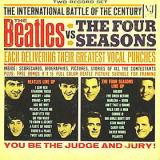 Three more album releases were made by Vee-Jay Records to cash in on the Beatles success before the label was ordered to "cease and desist." The first was “The Beatles vs. The Four Seasons,” coupling the “Introducing The Beatles” album with “The Golden Hits of the Four Seasons” as a double album that was released on October 1st, 1964. This compilation album only peaked at #142 on the Billboard album chart, selling a mere 20,000 copies. Then came their desperate act of repackaging the “Jolly What” album as “The Beatles And Frank Ifield On Stage,” which was released on October 10th, 1964 but only reached #104 on the Billboard album chart. The next appearance of the song was on a repackage of the “Introducing The Beatles” LP Vee-Jay titled “Songs, Pictures And Stories Of The Fabulous Beatles” released on October 12th, 1964. It was actually the leftover original “Introducing” albums packaged within a more elaborate sleeve. Many deceived Beatles' fans purhcased this LP, which peaked at #63 on the Billboard album chart and sold 400,000 copies. Three more album releases were made by Vee-Jay Records to cash in on the Beatles success before the label was ordered to "cease and desist." The first was “The Beatles vs. The Four Seasons,” coupling the “Introducing The Beatles” album with “The Golden Hits of the Four Seasons” as a double album that was released on October 1st, 1964. This compilation album only peaked at #142 on the Billboard album chart, selling a mere 20,000 copies. Then came their desperate act of repackaging the “Jolly What” album as “The Beatles And Frank Ifield On Stage,” which was released on October 10th, 1964 but only reached #104 on the Billboard album chart. The next appearance of the song was on a repackage of the “Introducing The Beatles” LP Vee-Jay titled “Songs, Pictures And Stories Of The Fabulous Beatles” released on October 12th, 1964. It was actually the leftover original “Introducing” albums packaged within a more elaborate sleeve. Many deceived Beatles' fans purhcased this LP, which peaked at #63 on the Billboard album chart and sold 400,000 copies.
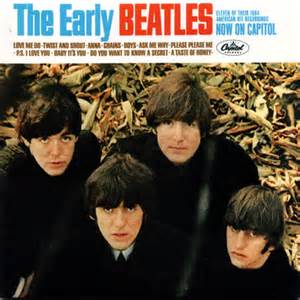 The next appearance of “Please Please Me” was on the Capitol album “The Early Beatles” which appeared on the scene on March 22nd, 1965. This became the only album to contain the song throughout the remainder of the '60s. Incidentally, mono copies of this LP contained a "Type B" mix of the songs created by Capitol Records that combined both channels of the stereo mix into one, the legitimate George Martin mono mixes of the songs previously being featured on all of the above mentioned Vee-Jay releases. "The Early Beatles" then appeared on compact disc on January 21st, 2014, containing both the mono and stereo mixes on one disc. The next appearance of “Please Please Me” was on the Capitol album “The Early Beatles” which appeared on the scene on March 22nd, 1965. This became the only album to contain the song throughout the remainder of the '60s. Incidentally, mono copies of this LP contained a "Type B" mix of the songs created by Capitol Records that combined both channels of the stereo mix into one, the legitimate George Martin mono mixes of the songs previously being featured on all of the above mentioned Vee-Jay releases. "The Early Beatles" then appeared on compact disc on January 21st, 2014, containing both the mono and stereo mixes on one disc.
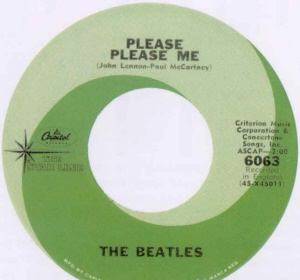 The next release of "Please Please Me" was as a single, still paired with “From Me To You,” on the Capitol “Star Line” budget label. This single was released on October 11th, 1965 and remained in print for a while through the '60s to allow “Please Please Me” to continually be available as a single. The next release of "Please Please Me" was as a single, still paired with “From Me To You,” on the Capitol “Star Line” budget label. This single was released on October 11th, 1965 and remained in print for a while through the '60s to allow “Please Please Me” to continually be available as a single.
During 1967, Capitol Records released Beatles music on a new but short-lived format called "Playtapes." These tape cartridges did not have the capability to include entire albums, so two truncated four-song versions of "The Early Beatles" were released in this portable format, "Please Please Me" being on one of these. These "Playtapes" are highly collectable today.
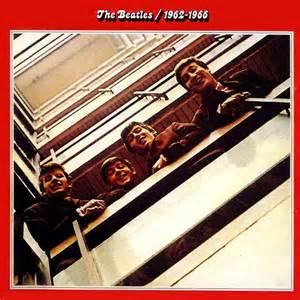 The next release of the song takes us into the ‘70s. It was included within the first official ‘Greatest Hits’ package “The Beatles 1962-1966,” better known as “The Red Album.” The album was released on April 2nd, 1973 and was certified gold by the RIAA two days before the set was released (March 31st). The album, featuring “Please Please Me” as its second song, peaked at #3 on the US Billboard album chart, being unable to dislodge “The Blue Album” (“The Beatles 1967-1970”) and Led Zeppelin’s “Houses Of The Holy” from the top of the chart. The RIAA shows sales exceeding 15 million units sold of this Beatles album. However, the RIAA tabulates the number of actual records sold, which means that this double album sold over 7 ½ million copies, an amazing feat for a band that officially broke up in 1970. Incidentally, this album was first made available on compact disc on September 20th, 1993 with its remastered version being released on CD on October 19th, 2010 and then on vinyl on October 31st, 2014. The next release of the song takes us into the ‘70s. It was included within the first official ‘Greatest Hits’ package “The Beatles 1962-1966,” better known as “The Red Album.” The album was released on April 2nd, 1973 and was certified gold by the RIAA two days before the set was released (March 31st). The album, featuring “Please Please Me” as its second song, peaked at #3 on the US Billboard album chart, being unable to dislodge “The Blue Album” (“The Beatles 1967-1970”) and Led Zeppelin’s “Houses Of The Holy” from the top of the chart. The RIAA shows sales exceeding 15 million units sold of this Beatles album. However, the RIAA tabulates the number of actual records sold, which means that this double album sold over 7 ½ million copies, an amazing feat for a band that officially broke up in 1970. Incidentally, this album was first made available on compact disc on September 20th, 1993 with its remastered version being released on CD on October 19th, 2010 and then on vinyl on October 31st, 2014.
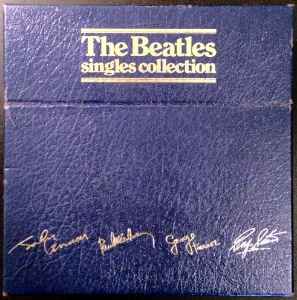 The next time "Please Please Me" was paired with "Ask Me Why" on a single in the US was on December 6th, 1982 as featured in the vinyl box set "The Beatles Singles Collection." When this package was released as "The Beatles CD Singles Collection" later on November 11th, 1992 and as a reissued vinyl collection titled "The Singles Collection" on November 22nd, 2019, this same single was included. The next time "Please Please Me" was paired with "Ask Me Why" on a single in the US was on December 6th, 1982 as featured in the vinyl box set "The Beatles Singles Collection." When this package was released as "The Beatles CD Singles Collection" later on November 11th, 1992 and as a reissued vinyl collection titled "The Singles Collection" on November 22nd, 2019, this same single was included.
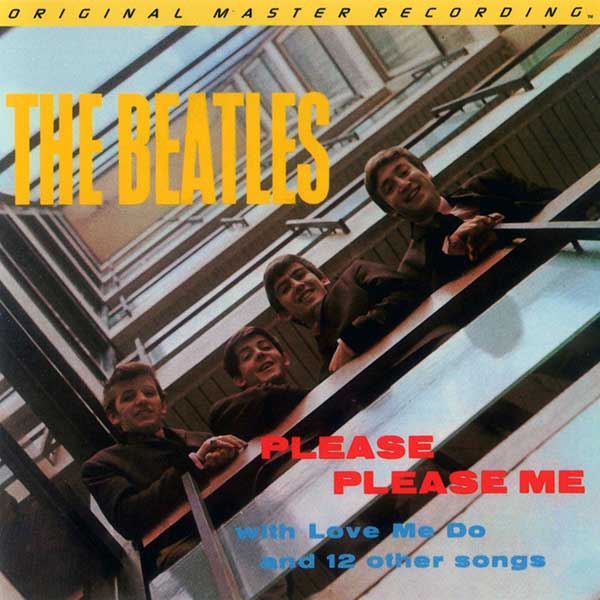 The first time the original British "Please Please Me" album was made available in America was on the "Original Master Recording" vinyl edition released through Mobile Fidelity Sound Lab in January of 1987. This album included the song "Please Please Me" and was prepared by utilizing half-speed mastering technology from the original master tape on loan from EMI. This version of the album was only available for a short time and is quite collectible today. The first time the original British "Please Please Me" album was made available in America was on the "Original Master Recording" vinyl edition released through Mobile Fidelity Sound Lab in January of 1987. This album included the song "Please Please Me" and was prepared by utilizing half-speed mastering technology from the original master tape on loan from EMI. This version of the album was only available for a short time and is quite collectible today.
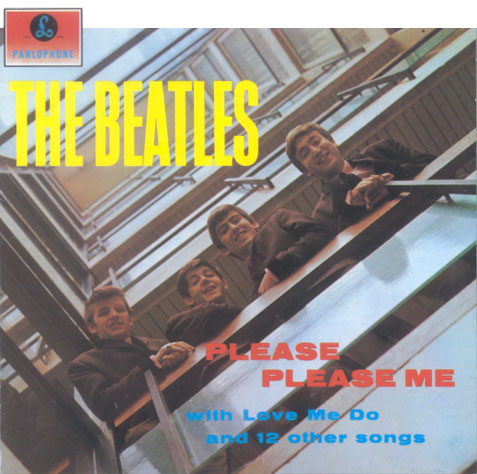 The next release was on February 26th, 1987, the "Please Please Me" album being the first official Beatles compact disc. The US vinyl version of this album was released on July 21st, 1987. While this LP was only released in mono at the time, the remastered stereo version on compact disc was released on September 9th, 2009, and then on vinyl on November 13th, 2012. The next release was on February 26th, 1987, the "Please Please Me" album being the first official Beatles compact disc. The US vinyl version of this album was released on July 21st, 1987. While this LP was only released in mono at the time, the remastered stereo version on compact disc was released on September 9th, 2009, and then on vinyl on November 13th, 2012.
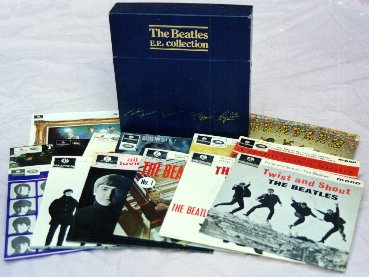 On June 30th, 1992, Capitol released the box set “Compact Disc EP Collection” which contained the mono version of “Please Please Me” due to its being featured on the original 1963 British EP “The Beatles’ Hits.” On June 30th, 1992, Capitol released the box set “Compact Disc EP Collection” which contained the mono version of “Please Please Me” due to its being featured on the original 1963 British EP “The Beatles’ Hits.”
The September 11th, 1962 version of the song that was thought to be lost (which features Andy White on drums) was discovered and appears on the November 21st, 1995 release “Anthology 1.” This double CD (and cassette) sold an outstanding one million units in its first week, debuting at #1 on the Billboard chart. The RIAA certified sales of eight million units, which translates to four million copies of the double album.
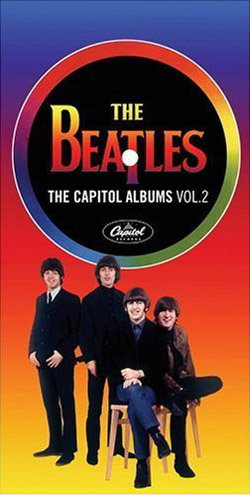 The next release was the box set “The Capitol Albums, Vol. 2,” which came out on April 11th, 2006. This set included the LP "The Early Beatles" in both stereo and "Type B" foldover mono as originally released. The next release was the box set “The Capitol Albums, Vol. 2,” which came out on April 11th, 2006. This set included the LP "The Early Beatles" in both stereo and "Type B" foldover mono as originally released.
There is much debate and/or disappointment concerning the song “Please Please Me” not appearing on the mega-million selling album “Beatles 1.” The qualification for a song being included on this album was its appearance at #1 in either the UK or the US. Because the song only reached #3 in America settles that issue, but its chart appearance in Britain is another story. Since there was no one accepted singles chart in Britain back in 1963, it depends on which music newspaper chart you look at. New Musical Express (said by some to be the main chart at the time) and Disc and Melody Maker both show the song peaking at #1, while Record Retailer shows it only peaking at #2. As it turned out, Record Retailer has since evolved into the standard "UK Singles Chart," therefore the determination was that “Please Please Me” didn’t quite deserve to be included on the “Beatles 1” album.
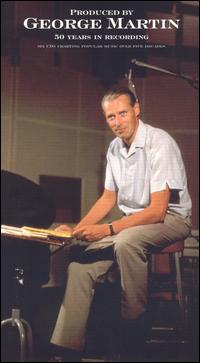 An elaborate 6 CD box set came out on July 17th, 2001 titled "Produced By George Martin," which was a huge compilation set that included examples of George Martin's production work throughout his career. "Please Please Me" was included on the disc entitled "Disc Three (That Was The Decade That Was)." An elaborate 6 CD box set came out on July 17th, 2001 titled "Produced By George Martin," which was a huge compilation set that included examples of George Martin's production work throughout his career. "Please Please Me" was included on the disc entitled "Disc Three (That Was The Decade That Was)."
The September 9th, 2009 released CD box set “The Beatles In Mono” includes a vibrant remastered version of the mono mix of this song. Also released on September 9th, 2009, in promotion of the remastered Beatles catalog, the "09.09.09 Sampler" was distributed to retailers and radio programmers, "Please Please Me" being included. The vinyl edition of this box set was first released on September 9th, 2014.
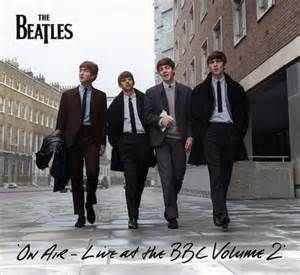 November 11th, 2013 was the release date for the album "On Air - Live At The BBC Volume 2." A rare version of "Please Please Me" is featured on this release, this being recorded on July 16th, 1963 for broadcast on the BBC radio program "Pop Go The Beatles." November 11th, 2013 was the release date for the album "On Air - Live At The BBC Volume 2." A rare version of "Please Please Me" is featured on this release, this being recorded on July 16th, 1963 for broadcast on the BBC radio program "Pop Go The Beatles."
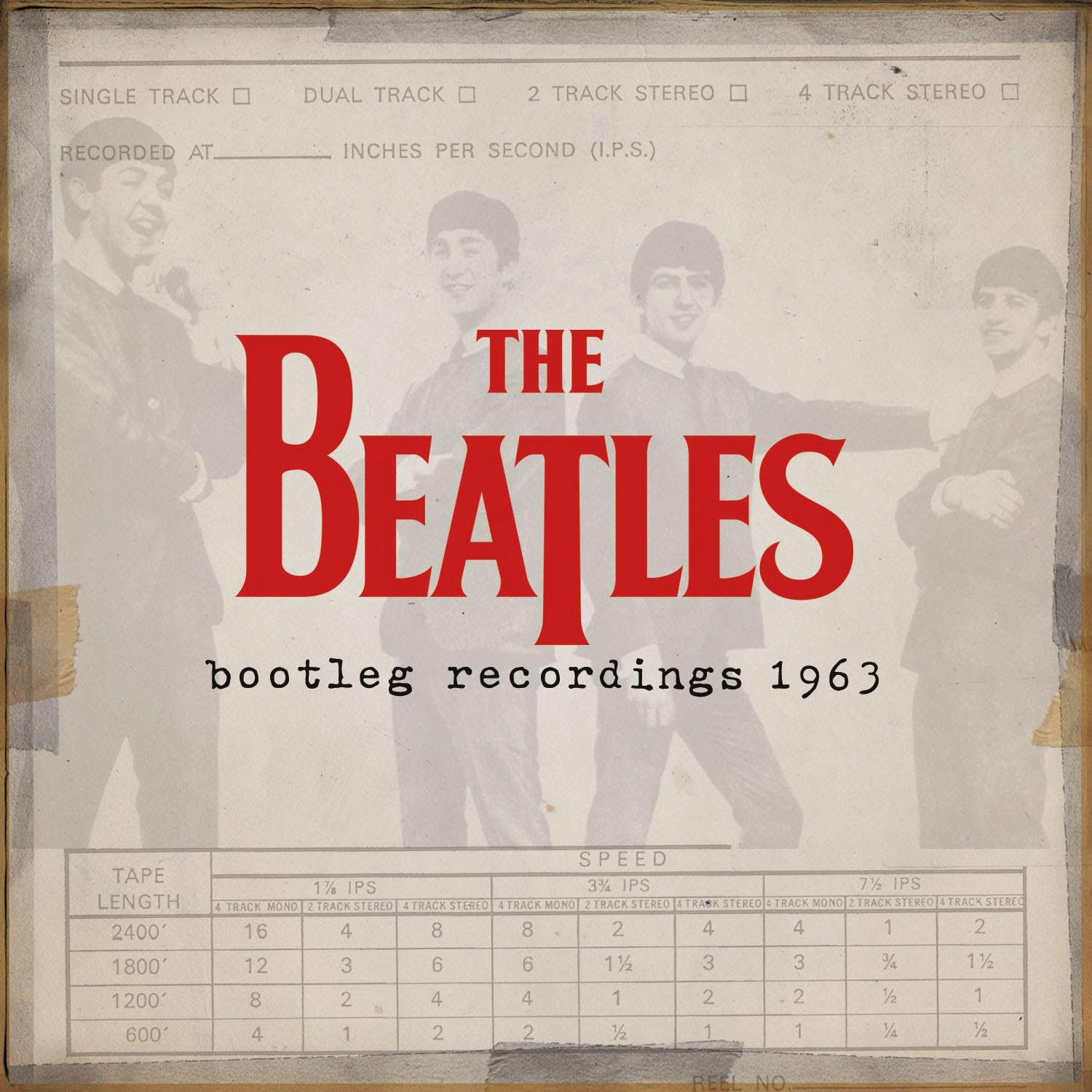 On December 17th, 2013, iTunes released a 59 track compilation album entitled "Bootleg Recordings 1963" only available on their downloading platform. Two BBC versions of "Please Me Me" are included therein, these being the October 20th, 1963 rendition for the BBC "Easy Beat" show and the March 12th, 1963 rendition for the "Here We Go" program. The purpose of this release was to extend the copyright of these recordings under European Union law from 50 years (which would have expired at the end of 2013) to 70 years (until 2033), this being considered an official release. This compilation was only available in the US on that date to those in the know for a number of hours for $39.99 in its entirety or to be purchased as individual tracks, but was later made available for purchase as well. On December 17th, 2013, iTunes released a 59 track compilation album entitled "Bootleg Recordings 1963" only available on their downloading platform. Two BBC versions of "Please Me Me" are included therein, these being the October 20th, 1963 rendition for the BBC "Easy Beat" show and the March 12th, 1963 rendition for the "Here We Go" program. The purpose of this release was to extend the copyright of these recordings under European Union law from 50 years (which would have expired at the end of 2013) to 70 years (until 2033), this being considered an official release. This compilation was only available in the US on that date to those in the know for a number of hours for $39.99 in its entirety or to be purchased as individual tracks, but was later made available for purchase as well.
In promotion of the 2014 box set "The US Albums," a 25-song sampler CD was manufactured for limited release on January 21st, 2014, this set containing the stereo mix of "Please Please Me."
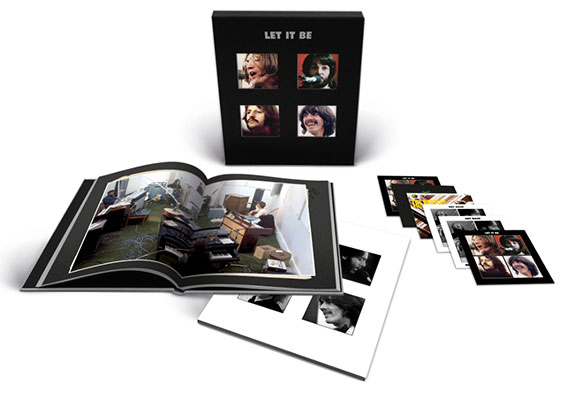 On October 15th, 2021, various editions of the "Let It Be" LP were released that feature an interesting version of "Please Please Me." The "Deluxe" 2CD set, the "Super Deluxe" 5CD + Blu-ray edition and the "Super Deluxe" 4LP + 1 12" EP edition all include "take nine" and "take 10" of their recording of the song "Let It Be," between which McCartney plays and sings a small portion of their early hit song "Please Please Me" on piano. On October 15th, 2021, various editions of the "Let It Be" LP were released that feature an interesting version of "Please Please Me." The "Deluxe" 2CD set, the "Super Deluxe" 5CD + Blu-ray edition and the "Super Deluxe" 4LP + 1 12" EP edition all include "take nine" and "take 10" of their recording of the song "Let It Be," between which McCartney plays and sings a small portion of their early hit song "Please Please Me" on piano.
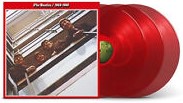 A 50th Anniversay edition of the compilation LP "The Beatles / 1962 - 1966" ("The Red Album") came out on November 10th, 2023 featuring the new mix of "Please Please Me" as detailed above. This expanded release now included 12 additional songs for a total of 38 tracks that was available as a double compact disc and also as a triple vinyl set available on both black and red vinyl. A 50th Anniversay edition of the compilation LP "The Beatles / 1962 - 1966" ("The Red Album") came out on November 10th, 2023 featuring the new mix of "Please Please Me" as detailed above. This expanded release now included 12 additional songs for a total of 38 tracks that was available as a double compact disc and also as a triple vinyl set available on both black and red vinyl.
Live Performances
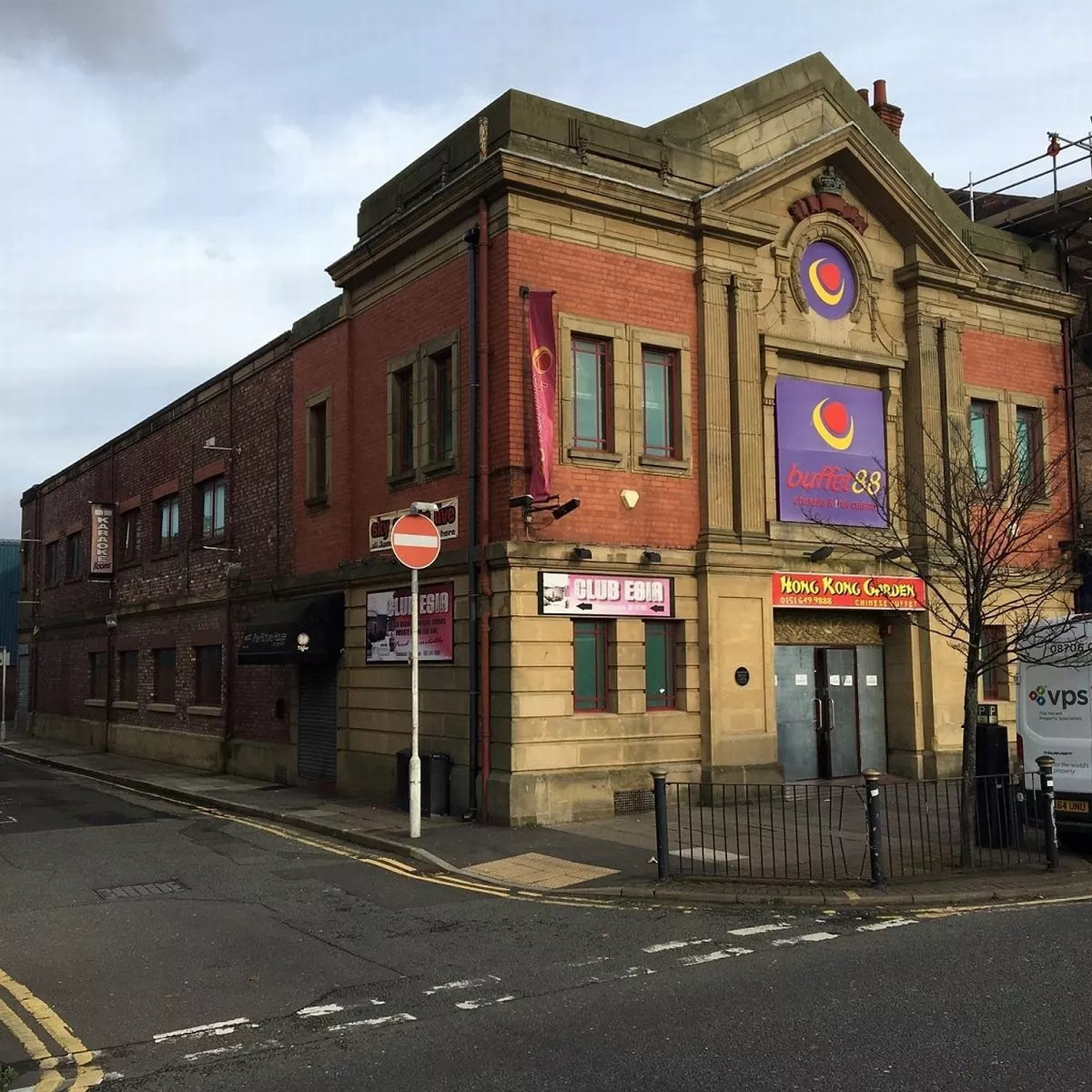 As detailed above, there is not any evidence to show that “Please Please Me” was performed live before its being recorded at EMI Studios. In fact, it appears that they kept the song under wraps for a short time after it was recorded, wanting to premier this song when it would make the best impact. This turned out to be at the Mersey Beat Awards Night on December 15th, 1962 at the Majestic Ballroom in Birkenhead, Merseyside, England, right after they received their award for topping the Mersey Beat poll for the second year in a row. This first live performance of "Please Please Me" occurred just nineteen days after their official EMI recording of the song and twenty-seven days (nearly four weeks) before its official release as their second British single on January 11th, 1963. As detailed above, there is not any evidence to show that “Please Please Me” was performed live before its being recorded at EMI Studios. In fact, it appears that they kept the song under wraps for a short time after it was recorded, wanting to premier this song when it would make the best impact. This turned out to be at the Mersey Beat Awards Night on December 15th, 1962 at the Majestic Ballroom in Birkenhead, Merseyside, England, right after they received their award for topping the Mersey Beat poll for the second year in a row. This first live performance of "Please Please Me" occurred just nineteen days after their official EMI recording of the song and twenty-seven days (nearly four weeks) before its official release as their second British single on January 11th, 1963.
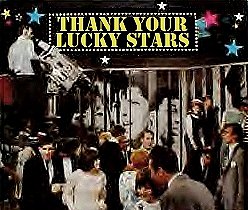 Three days before the record was released in the UK on January 8th, 1963, the group appeared on a live local Scotish TV show called "Roundup" miming a performance of "Please Please Me." Then, two days following the UK release of the single, January 13th, 1963, The Beatles taped a mimed performance of the song for the national British Saturday night TV show “Thank Your Lucky Stars,” which was broadcast on January 19th of that year. This opened many doors for The Beatles, helping propel the song to the top of most of the national charts. Then on January 16th, 1963, they mimed the song live on the Granada TV show "People And Places." Three days before the record was released in the UK on January 8th, 1963, the group appeared on a live local Scotish TV show called "Roundup" miming a performance of "Please Please Me." Then, two days following the UK release of the single, January 13th, 1963, The Beatles taped a mimed performance of the song for the national British Saturday night TV show “Thank Your Lucky Stars,” which was broadcast on January 19th of that year. This opened many doors for The Beatles, helping propel the song to the top of most of the national charts. Then on January 16th, 1963, they mimed the song live on the Granada TV show "People And Places."
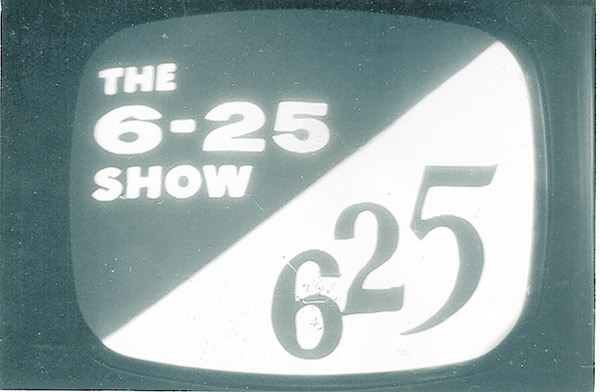 And then came another appearance on "Thank Your Lucky Stars," this mimed performance of "Please Please Me" taped on February 17th, 1963 and aired on February 23rd of that year. Another mimed performance of the song was for the children's television program "Tuesday Rendezvous" on April 9th, 1963, the closing credits featuring 50 seconds of "Please Please Me" played by the group live. Following this was "The 625 Show," The Beatles performing "Please Please Me" at the close of the show, joined by the entire cast. This show was taped on April 13th, 1963 and broadcast on April 16th, 1963. The national BBC TV show "Pops And Lenny" was next, this being a live broadcast on May 16th, 1963, featuring a truncated version of "Please Please Me" that only lasted 1 minute and 5 seconds. And then came another appearance on "Thank Your Lucky Stars," this mimed performance of "Please Please Me" taped on February 17th, 1963 and aired on February 23rd of that year. Another mimed performance of the song was for the children's television program "Tuesday Rendezvous" on April 9th, 1963, the closing credits featuring 50 seconds of "Please Please Me" played by the group live. Following this was "The 625 Show," The Beatles performing "Please Please Me" at the close of the show, joined by the entire cast. This show was taped on April 13th, 1963 and broadcast on April 16th, 1963. The national BBC TV show "Pops And Lenny" was next, this being a live broadcast on May 16th, 1963, featuring a truncated version of "Please Please Me" that only lasted 1 minute and 5 seconds.
 The Beatles began featuring "Please Please Me" in their live performances just after the record was released on January 11th, 1963, playing throughout the remainder of the month in Liverpool, Kent, Cheshire, Birkenhead and Flintshire, among others. Then, starting on February 2nd of that year, the band began a series of national tours, first with Helen Shapiro throughout February, Tommy Roe and Chris Montez in March, Roy Orbison in May, and throughout the rest of the year as the headlining act. Each tour featured The Beatles performing their #1 British hit, even catapulting them to top of the bill on the Tommy Roe and Roy Orbison tours, which found them quite uncomfortable in doing so. The Beatles began featuring "Please Please Me" in their live performances just after the record was released on January 11th, 1963, playing throughout the remainder of the month in Liverpool, Kent, Cheshire, Birkenhead and Flintshire, among others. Then, starting on February 2nd of that year, the band began a series of national tours, first with Helen Shapiro throughout February, Tommy Roe and Chris Montez in March, Roy Orbison in May, and throughout the rest of the year as the headlining act. Each tour featured The Beatles performing their #1 British hit, even catapulting them to top of the bill on the Tommy Roe and Roy Orbison tours, which found them quite uncomfortable in doing so.
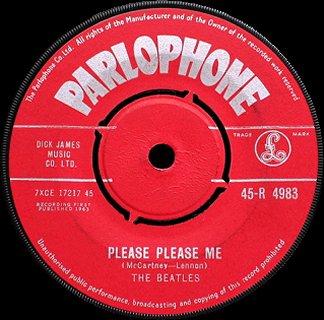 As detailed above, the band performed "Please Please Me" on April 4th, 1963, at an hour-long concert that was held at Roxburgh Hall, Stowe School in Stowe, Bucks, this being an all-boys school. The following day, this being April 5th, 1963, the band performed this song again at an early evening engagement for record company executives assembled at EMI House in London during a ceremony to award The Beatles their first silver disc for their successful Parlophone single "Please Please Me." As detailed above, the band performed "Please Please Me" on April 4th, 1963, at an hour-long concert that was held at Roxburgh Hall, Stowe School in Stowe, Bucks, this being an all-boys school. The following day, this being April 5th, 1963, the band performed this song again at an early evening engagement for record company executives assembled at EMI House in London during a ceremony to award The Beatles their first silver disc for their successful Parlophone single "Please Please Me."
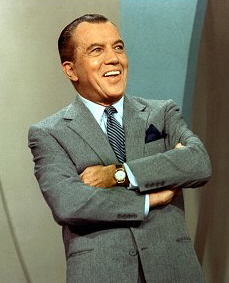 In addition to the extensive British television exposure of the song in 1963, the following year brought "Please Please Me" into the American TV spotlight as well. The US was treated to an Ed Sullivan Show performance of the song on February 23rd, 1964, this being their third appearance on the show, although this performance was taped earlier on the day of their first appearance on February 9th, 1964. This February 23rd television broadcast of "Please Please Me" coincided nicely with the song’s first US appearance on the Billboard Hot 100 chart the day before, this TV show undoubtedly helping to propel it to the #3 position on the Billboard chart a month later. In Britain, they appeared on their own television special “Around The Beatles,” which was broadcast on May 6th and June 8th, 1964. The show included their miming to a previously recorded medley which contained a portion of “Please Please Me.” In addition to the extensive British television exposure of the song in 1963, the following year brought "Please Please Me" into the American TV spotlight as well. The US was treated to an Ed Sullivan Show performance of the song on February 23rd, 1964, this being their third appearance on the show, although this performance was taped earlier on the day of their first appearance on February 9th, 1964. This February 23rd television broadcast of "Please Please Me" coincided nicely with the song’s first US appearance on the Billboard Hot 100 chart the day before, this TV show undoubtedly helping to propel it to the #3 position on the Billboard chart a month later. In Britain, they appeared on their own television special “Around The Beatles,” which was broadcast on May 6th and June 8th, 1964. The show included their miming to a previously recorded medley which contained a portion of “Please Please Me.”
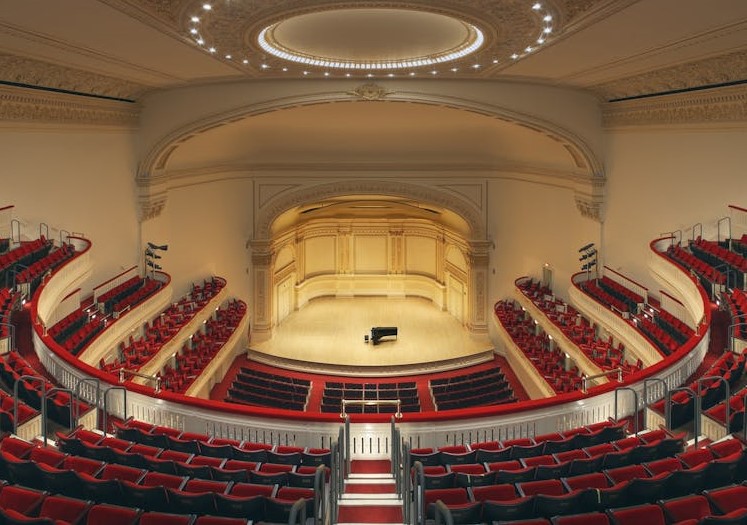 The song also continued to be performed live in the beginnings of The Beatles' first US tour in 1964, being heard at their first American concert at the Washington Coliseum on February 11th, and the next day at Carnegie Hall on February 12th. The song does not appear to be included in their set list for any tours or concert appearances after this date, since they had three huge selling singles released in Britain since then to focus on, as well as multiple placements on the US singles and album charts. Their June 8th, 1964 broadcast of the song in the UK on their “Around The Beatles” TV special appears to be the last time the song was heard performed by The Beatles. The song also continued to be performed live in the beginnings of The Beatles' first US tour in 1964, being heard at their first American concert at the Washington Coliseum on February 11th, and the next day at Carnegie Hall on February 12th. The song does not appear to be included in their set list for any tours or concert appearances after this date, since they had three huge selling singles released in Britain since then to focus on, as well as multiple placements on the US singles and album charts. Their June 8th, 1964 broadcast of the song in the UK on their “Around The Beatles” TV special appears to be the last time the song was heard performed by The Beatles.
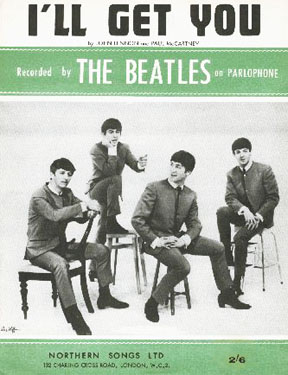 Surprisingly, Paul chose to include “Please Please Me” as one of the closing encore selections during his "The 'US' Tour," which ran from September 16th (Miami, Florida) to November 30th, 2005 (Los Angeles, California). This is especially surprising because, as previously explained, the song was composed entirely by John, who also sang lead vocals on the original recording. Prior to this, McCartney had always chosen Beatles songs to perform live based on those that he was the original lead singer and writer. The inclusion of this song on this tour, as well as the song “I’ll Get You,” has indeed broken that pattern. Surprisingly, Paul chose to include “Please Please Me” as one of the closing encore selections during his "The 'US' Tour," which ran from September 16th (Miami, Florida) to November 30th, 2005 (Los Angeles, California). This is especially surprising because, as previously explained, the song was composed entirely by John, who also sang lead vocals on the original recording. Prior to this, McCartney had always chosen Beatles songs to perform live based on those that he was the original lead singer and writer. The inclusion of this song on this tour, as well as the song “I’ll Get You,” has indeed broken that pattern.
Conclusion
America can indeed be grateful for the turn of events that led to the success of “Please Please Me” in Britain since, if this had not happened, things would not have snowballed into international success for The Beatles. The band may have remained a local Liverpool act and would surely have died a quiet death as most of the other local “beat” groups of their day had.
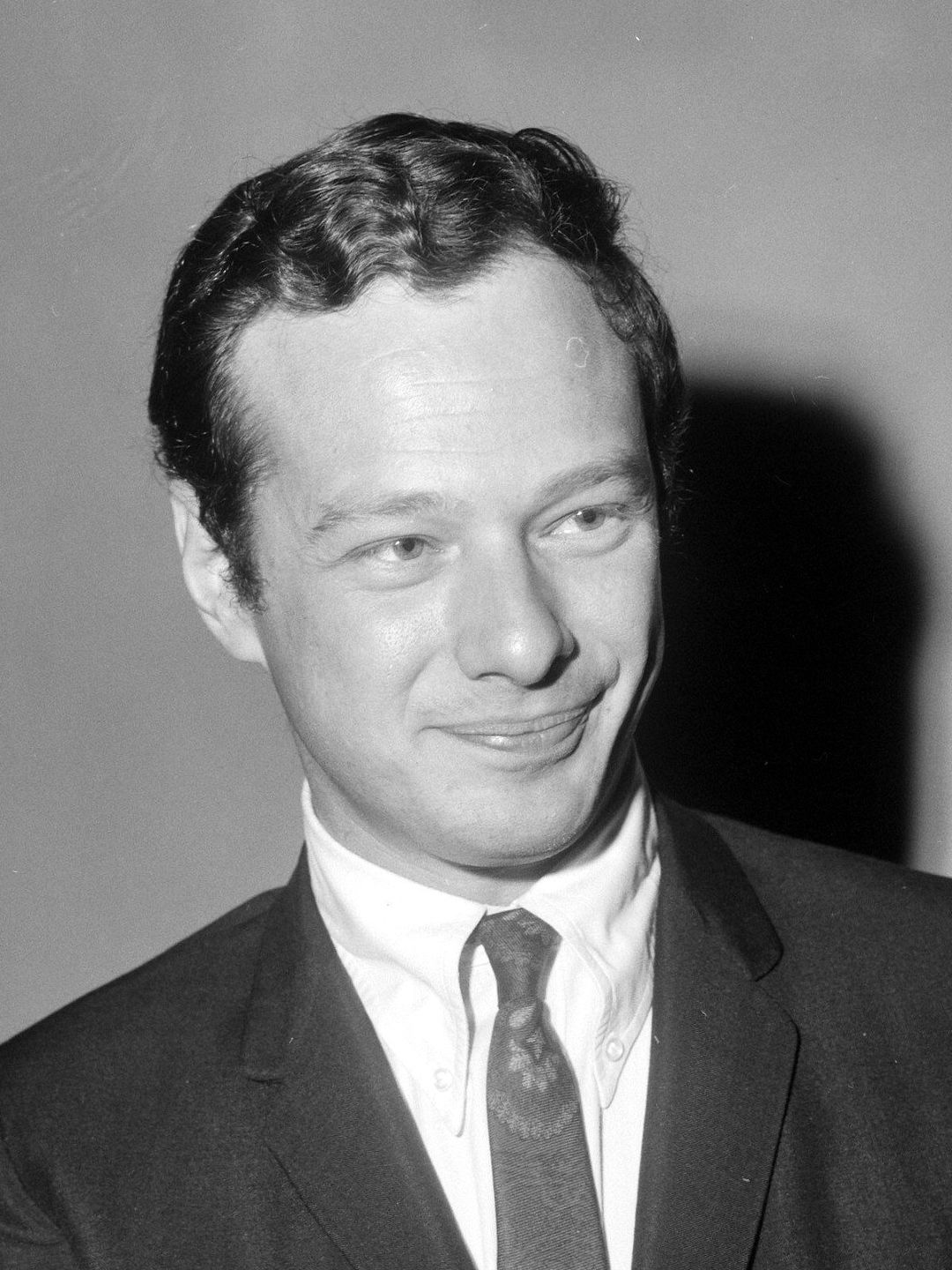 One can speculate that since they were in Germany during the months just after the British release of “Love Me Do,” The Beatles couldn’t promote the song with national tours or television exposure like they were available to do with “Please Please Me.” One can speculate that if they hadn’t stumbled upon individuals with good connections who got behind them, such as Brian Epstein, George Martin and Dick James, the band would have remained obscure local celebrities. One can even speculate that since Britain had the worst winter on record at the time "Please Please Me" was released, a huge British audience was snowed-in and had nothing better to do than watch them perform the song on “Thank Your Lucky Stars,” thus creating amazing exposure and newspaper reviews. One can speculate that since they were in Germany during the months just after the British release of “Love Me Do,” The Beatles couldn’t promote the song with national tours or television exposure like they were available to do with “Please Please Me.” One can speculate that if they hadn’t stumbled upon individuals with good connections who got behind them, such as Brian Epstein, George Martin and Dick James, the band would have remained obscure local celebrities. One can even speculate that since Britain had the worst winter on record at the time "Please Please Me" was released, a huge British audience was snowed-in and had nothing better to do than watch them perform the song on “Thank Your Lucky Stars,” thus creating amazing exposure and newspaper reviews.
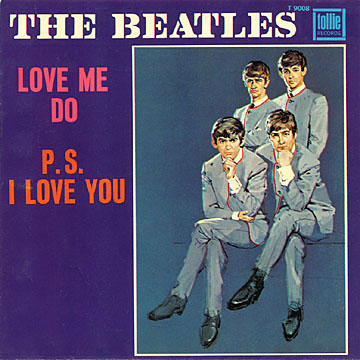 All speculation aside, it can assuredly be said that none of this would have happened without an amazingly well written song. “Love Me Do,” as innovative as this was, would undoubtedly not have had the same impact. John Lennon's creative songwriting ability came through to deliver a blockbuster song that had clever lyrics and an appealing structure that just "hit the spot" on a national level. All speculation aside, it can assuredly be said that none of this would have happened without an amazingly well written song. “Love Me Do,” as innovative as this was, would undoubtedly not have had the same impact. John Lennon's creative songwriting ability came through to deliver a blockbuster song that had clever lyrics and an appealing structure that just "hit the spot" on a national level.
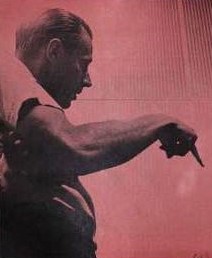 The record's success also became a "feather" in George Martin's "cap," his arrangement suggestions proving to be just what the song needed after all. Their respect for George Martin increased greatly after this, The Beatles depending on him, to a greater or lesser degree, for his musical direction throughout their career. The record's success also became a "feather" in George Martin's "cap," his arrangement suggestions proving to be just what the song needed after all. Their respect for George Martin increased greatly after this, The Beatles depending on him, to a greater or lesser degree, for his musical direction throughout their career.
However you slice it, the US, as well as the rest of the world, can be immensely grateful for what The Beatles brought forward with this song. American music would not have been impacted the way it was, nor would you be reading this today, if John Lennon hadn’t written a song entitled “Please Please Me.”
Song Summary
"Please Please Me”
Written by: Paul McCartney / John Lennon
- Song Written: June 7 through 9, 1962
- Song Recorded: November 26, 1962
- First US Release Date: February 7, 1963
- US Single Release: Vee Jay #498
- First US Album Release: Vee Jay #VJLP 1062 “Introducing…The Beatles”
- Highest Chart Position: #3
- British Album Release: Parlophone #PCS3042 “Please Please Me”
- Length: 2:04
- Key: E major
- Producer: George Martin
- Engineer: Norman Smith
Instrumentation (most likely):
Written and compiled by Dave Rybaczewski
|
IF YOU WOULD LIKE TO MAKE A DONATION TO KEEP THIS WEBSITE UP AND RUNNING, PLEASE CLICK BELOW!
Sign Up Below for our MONTHLY BEATLES TRIVIA QUIZ!
|